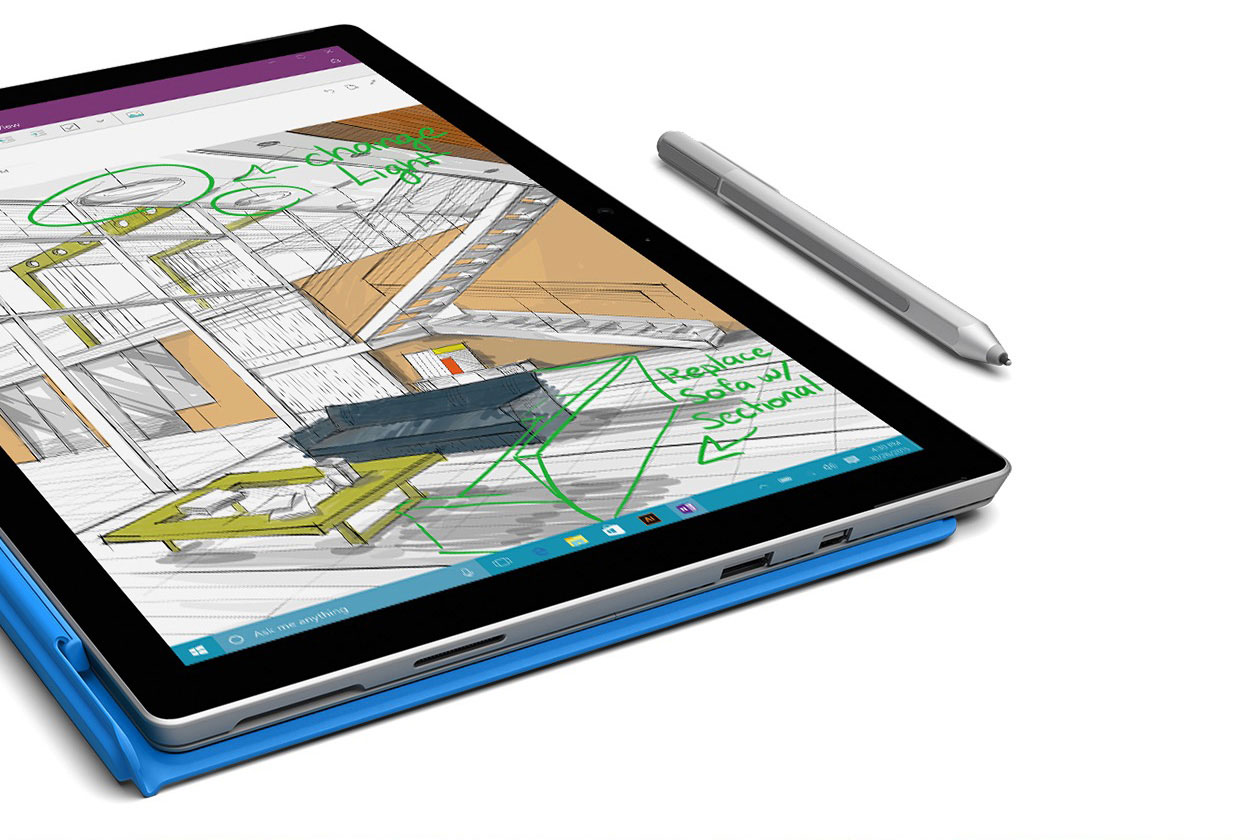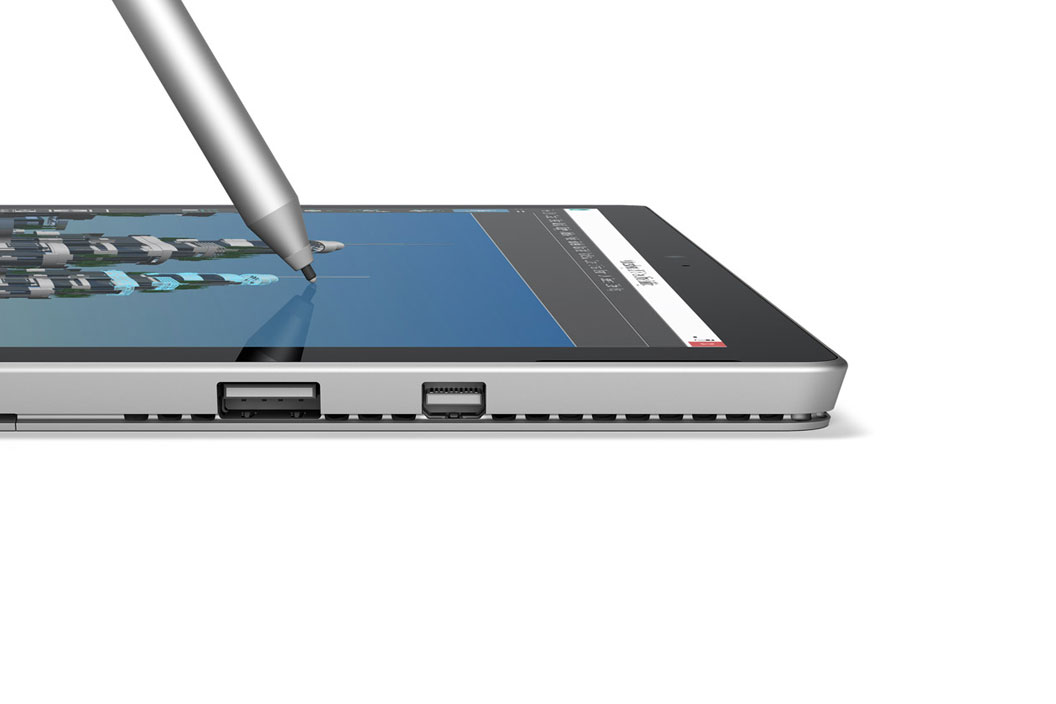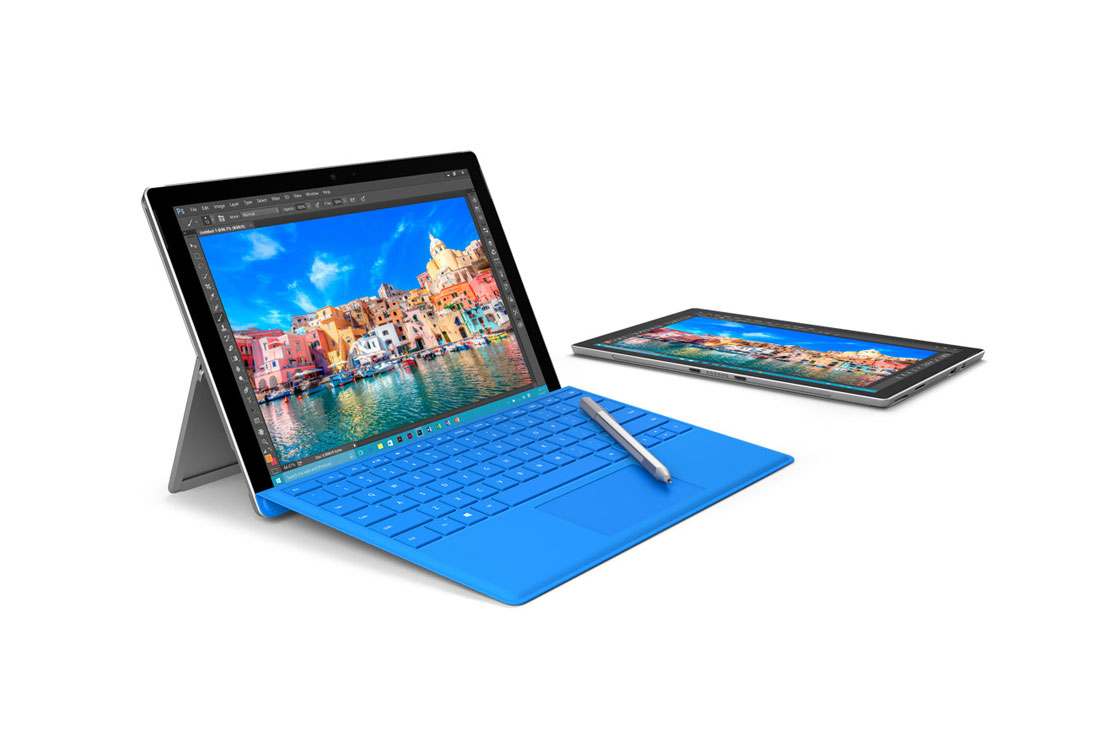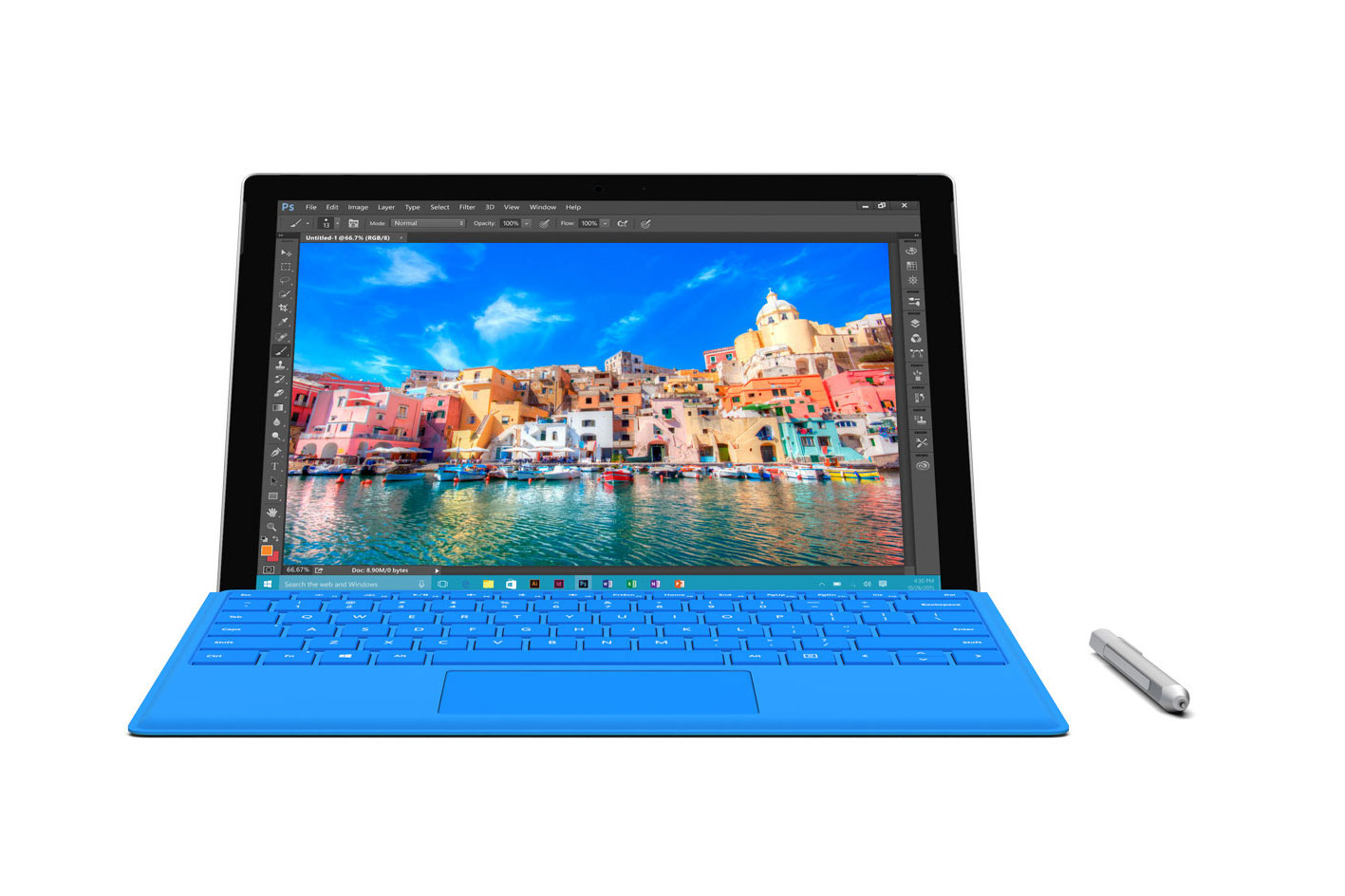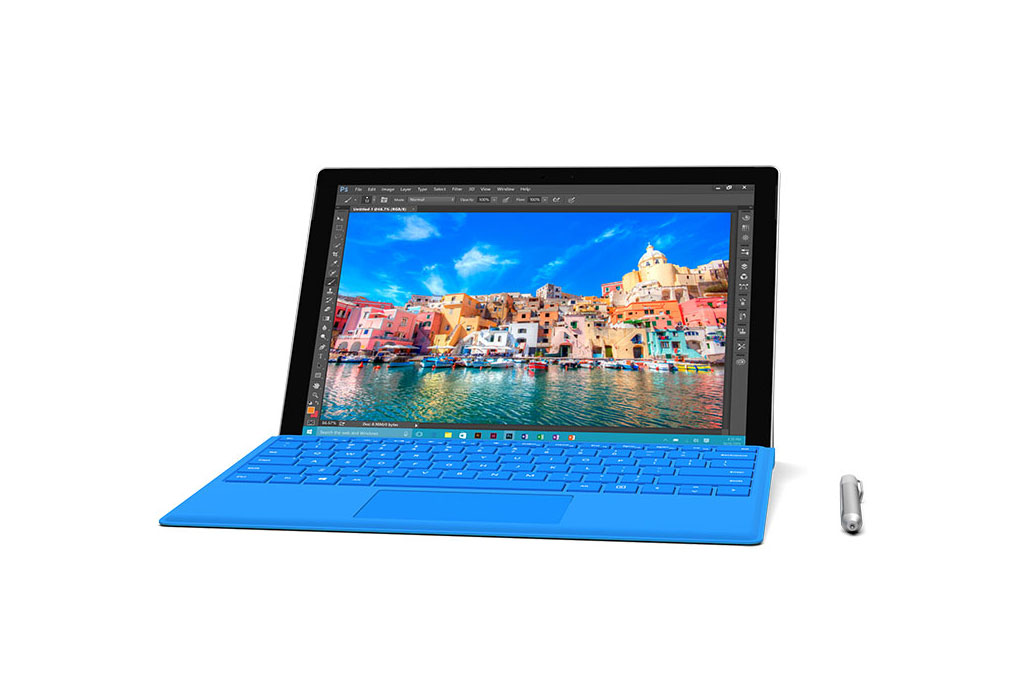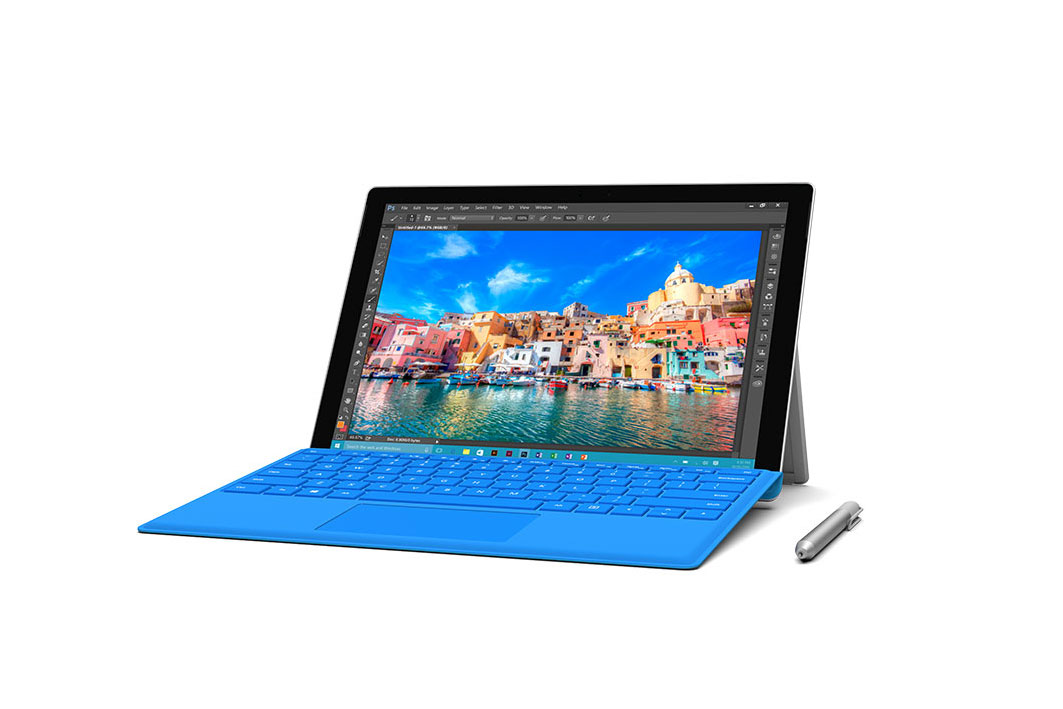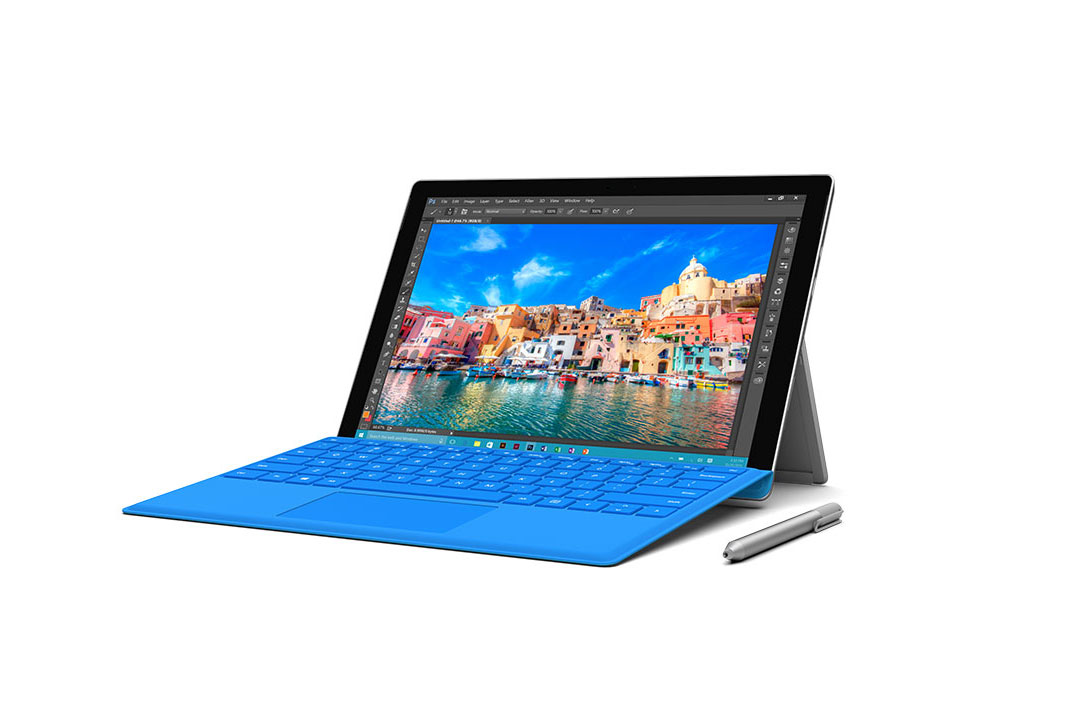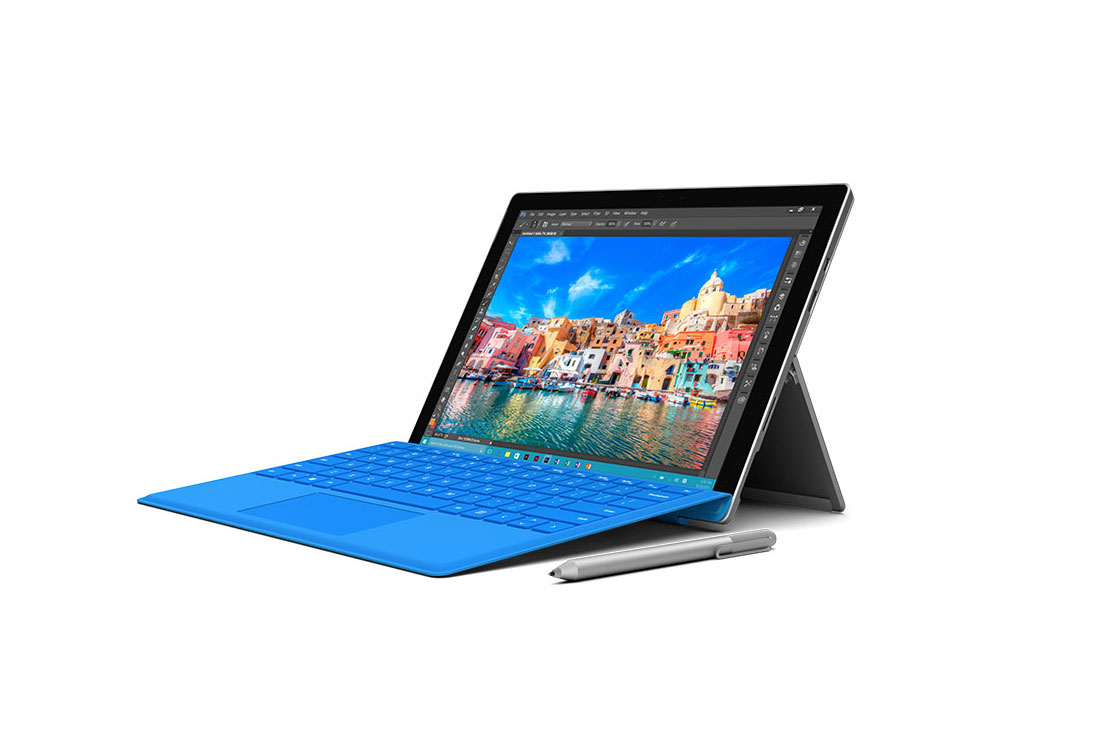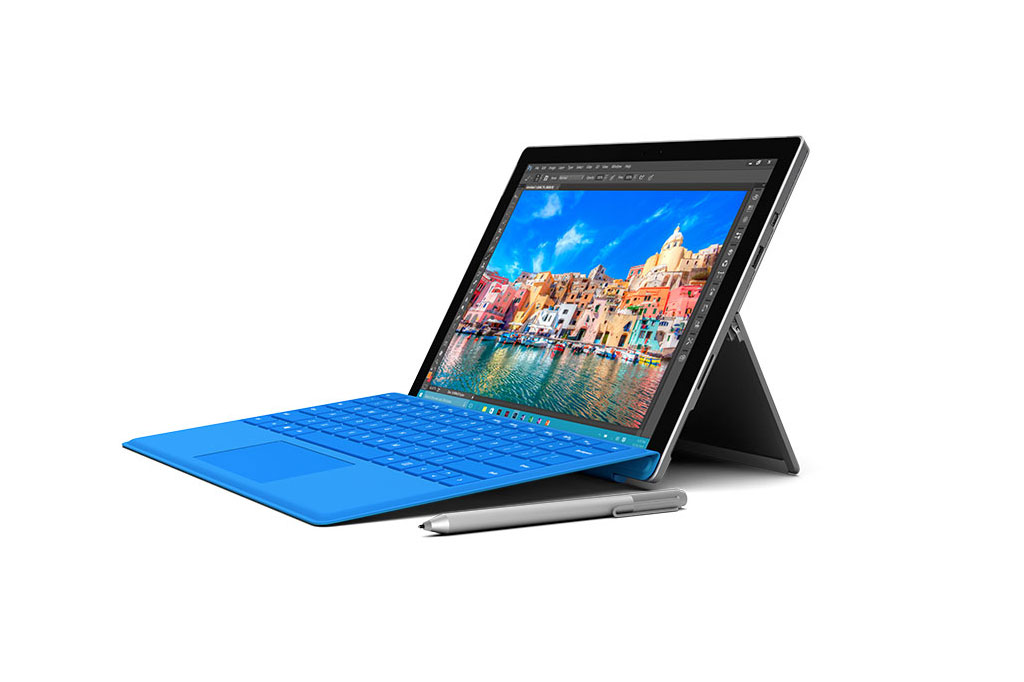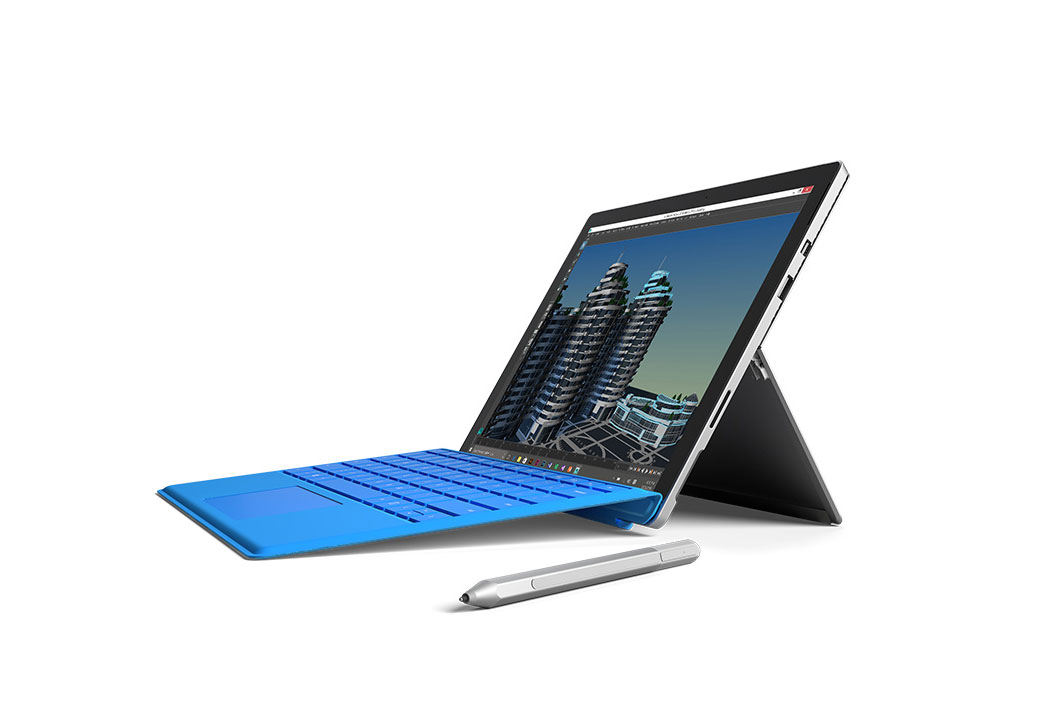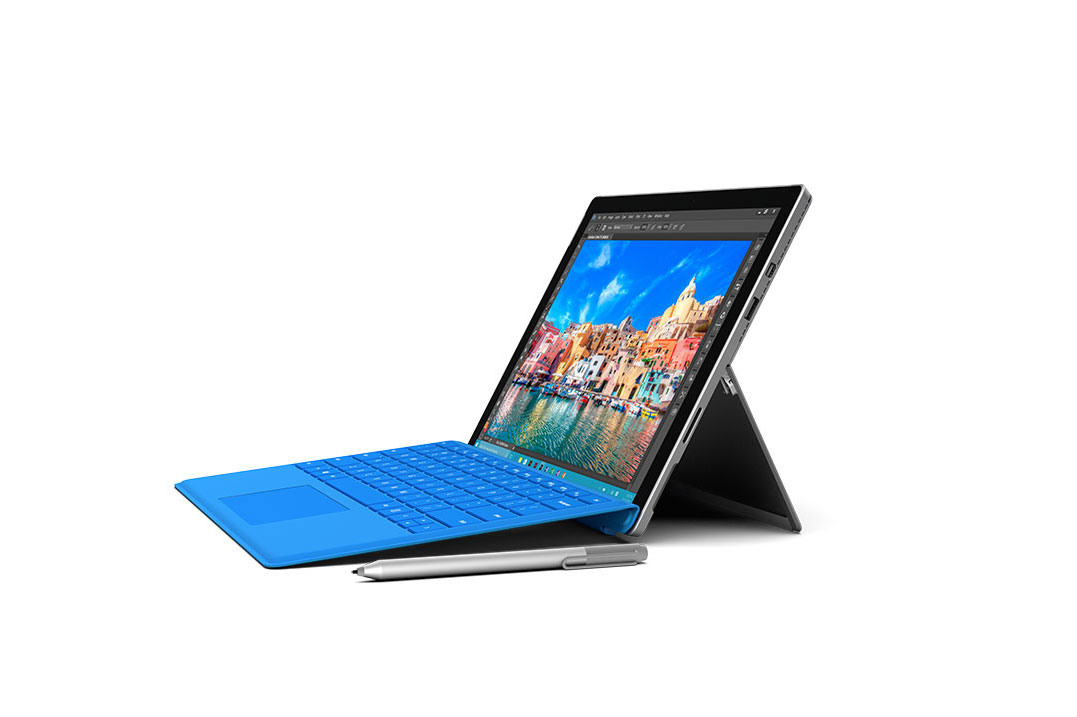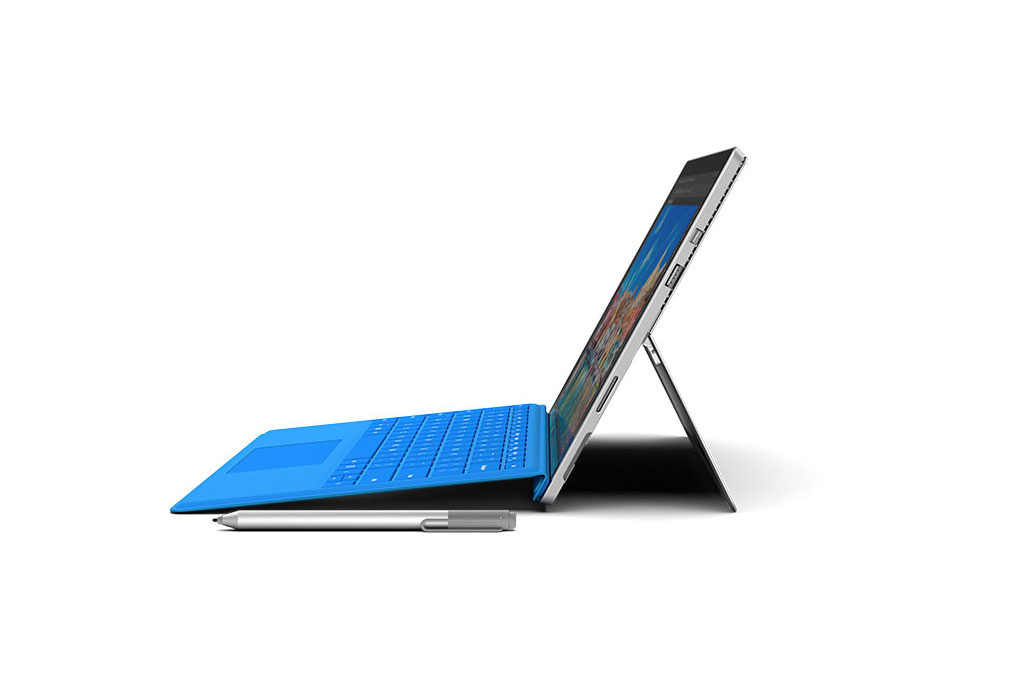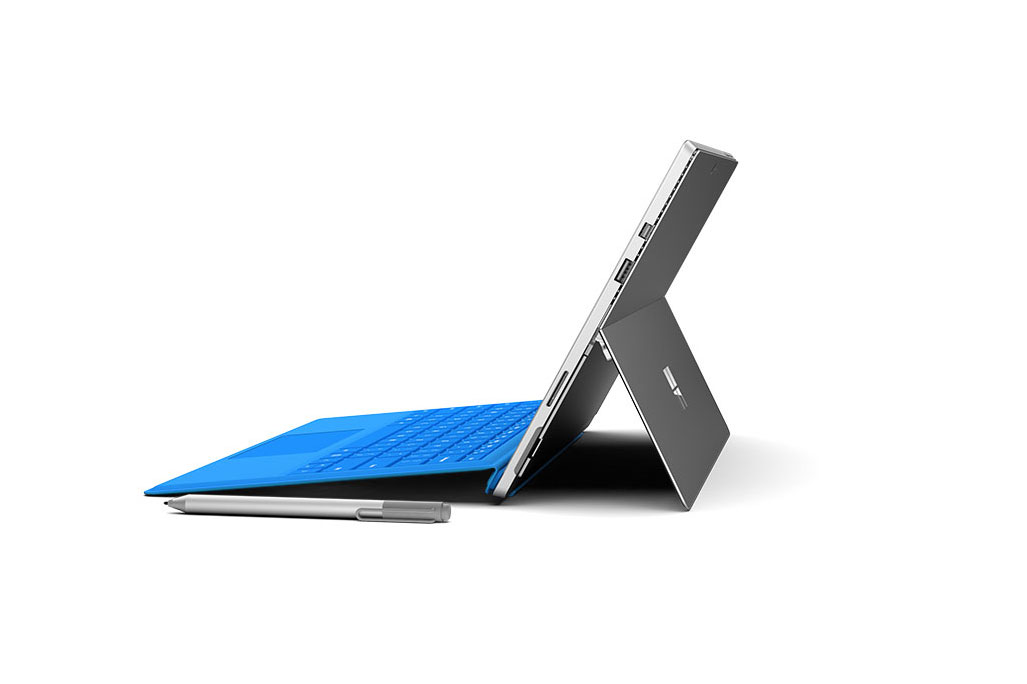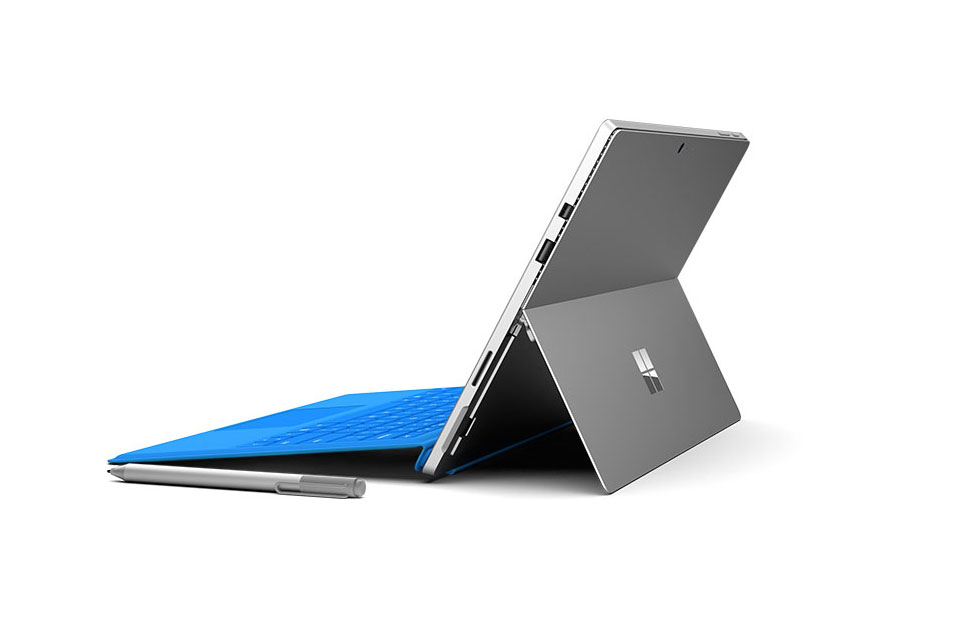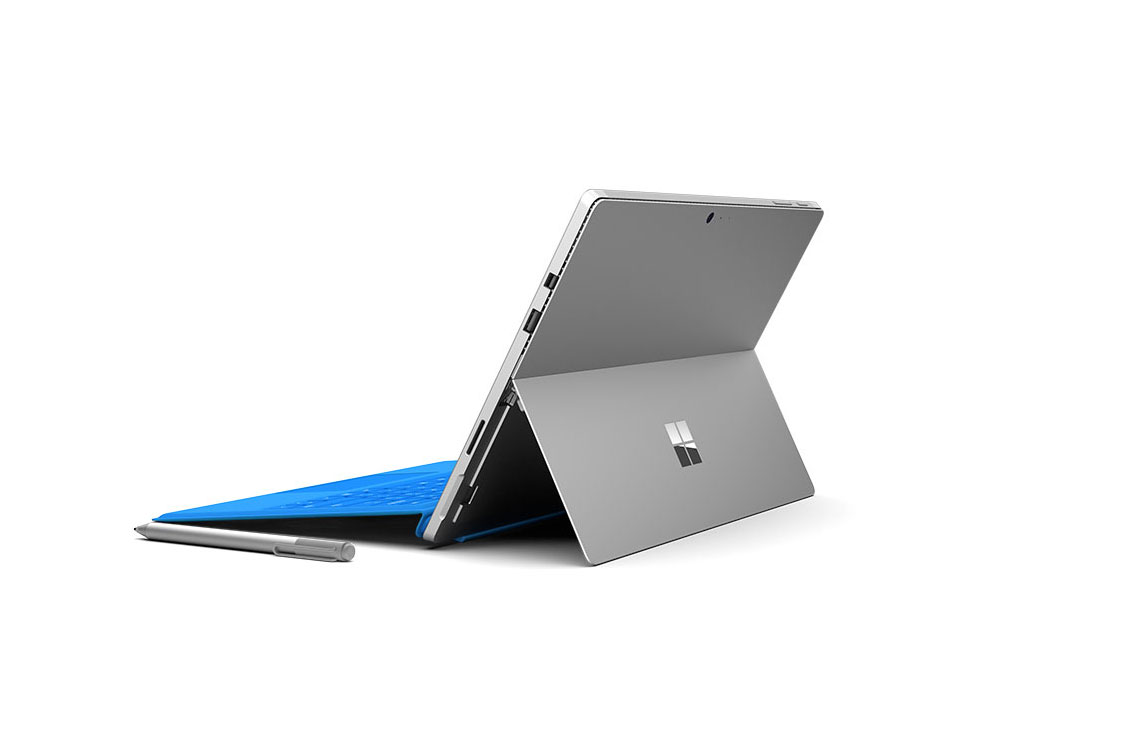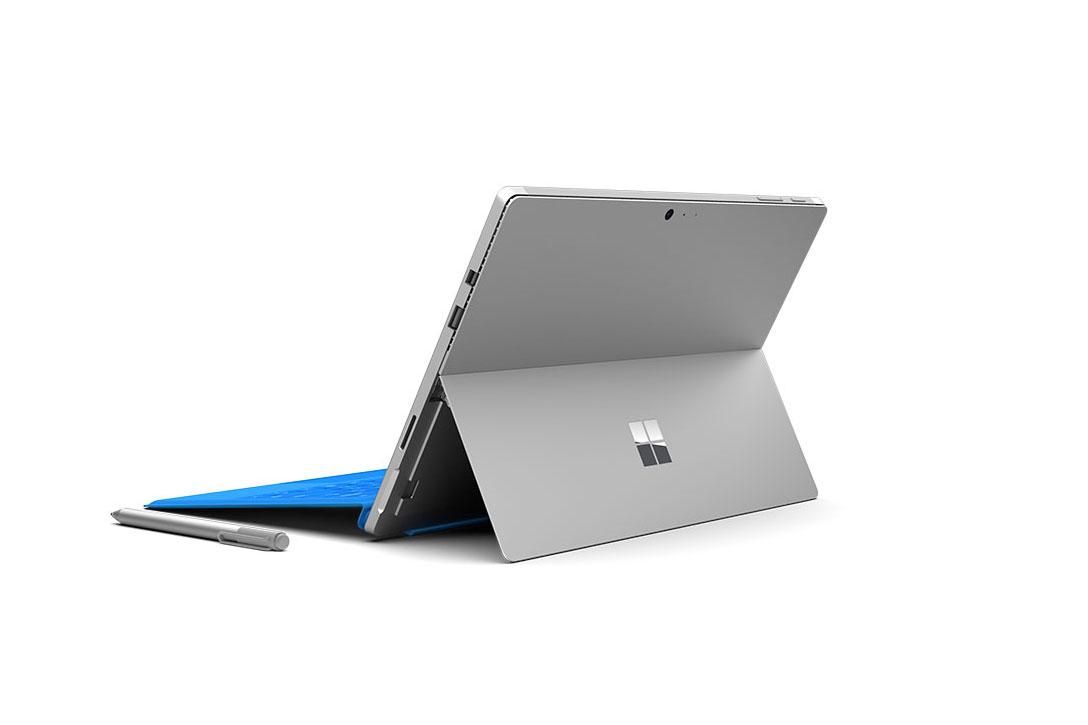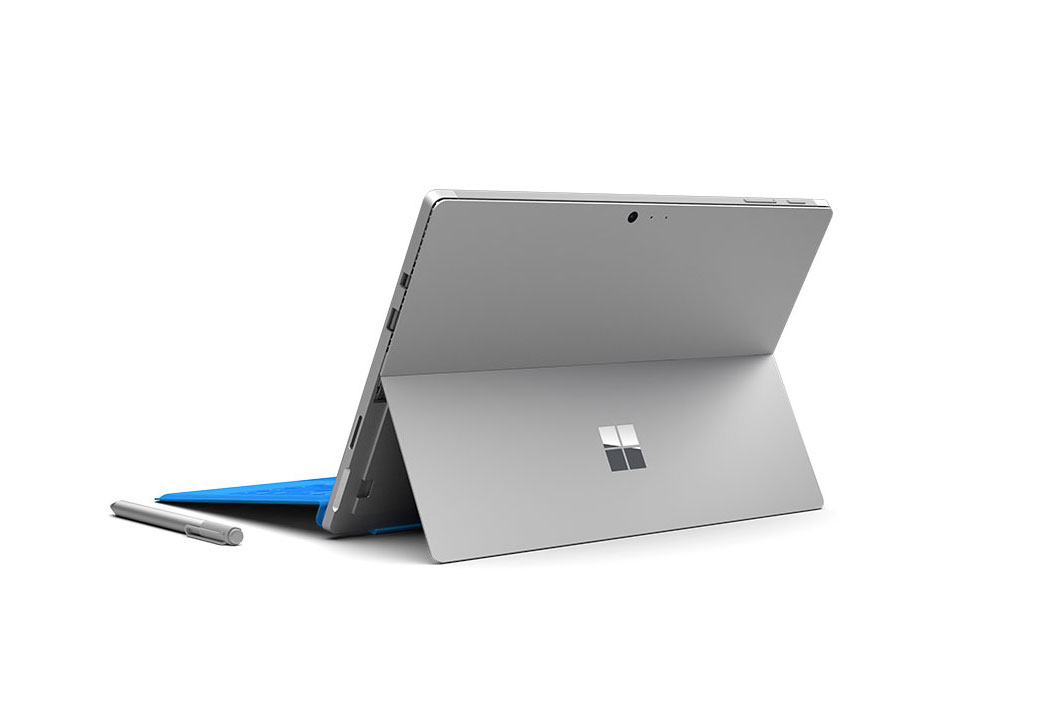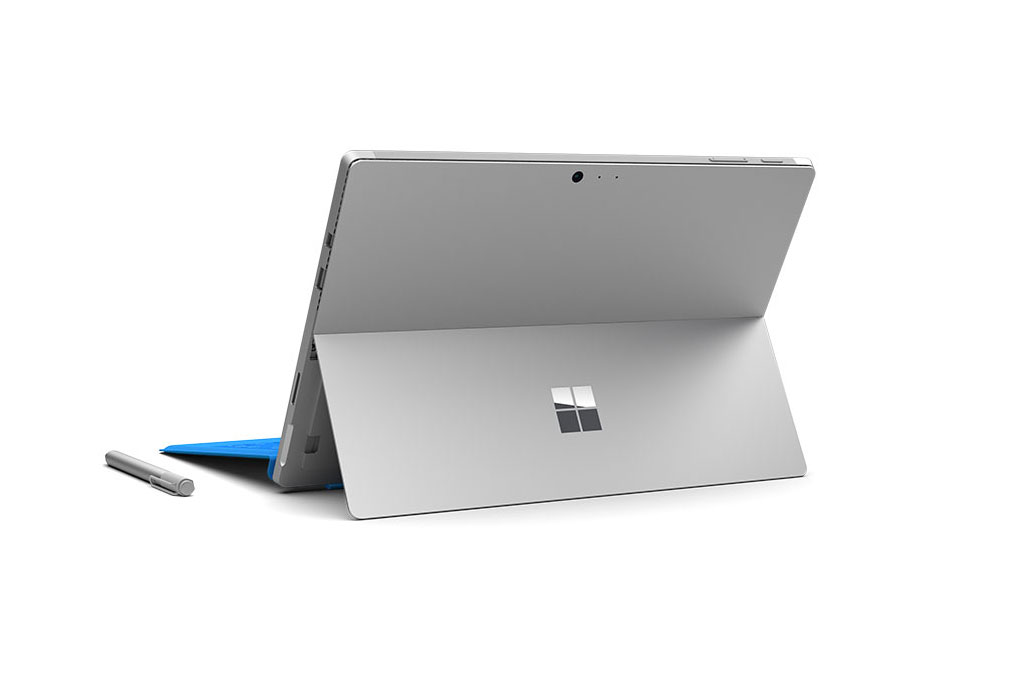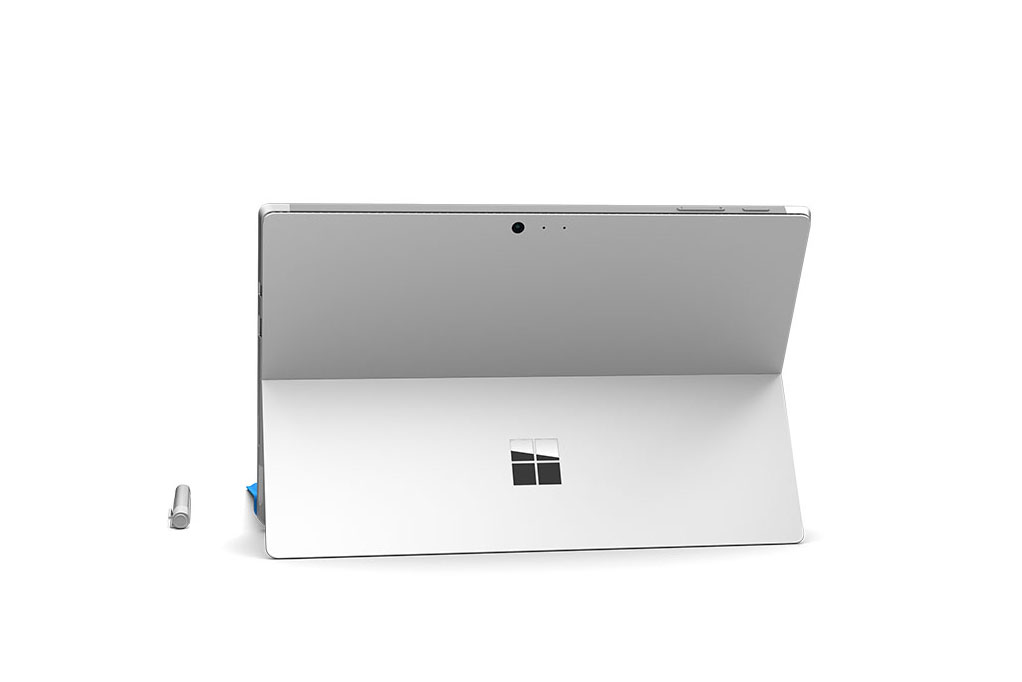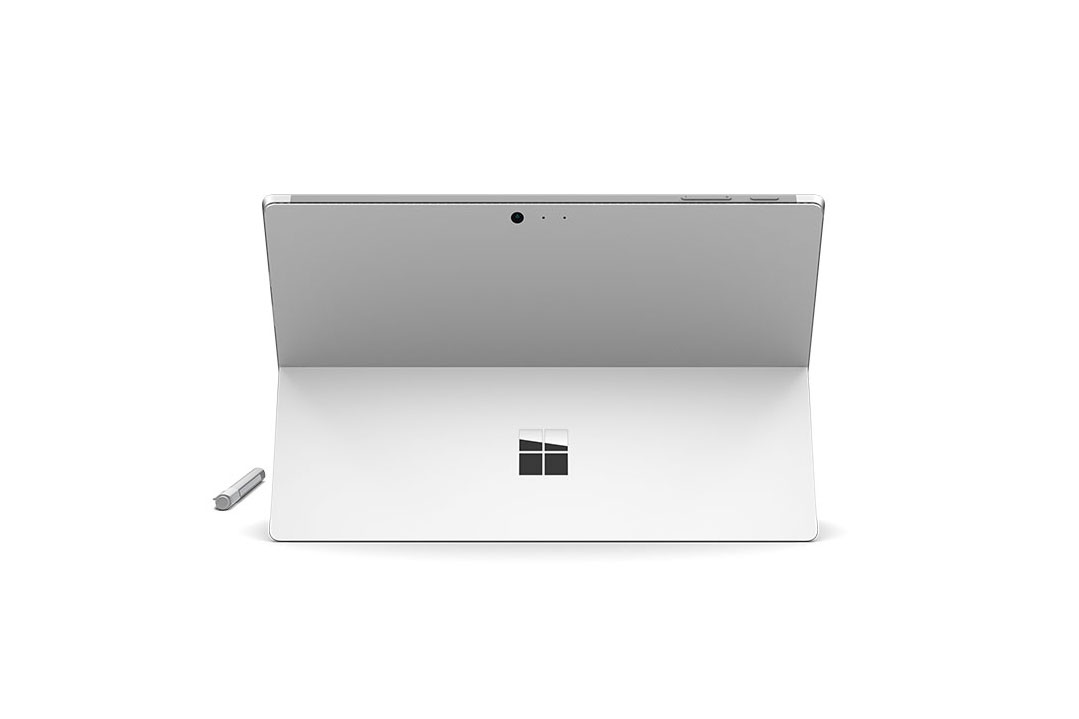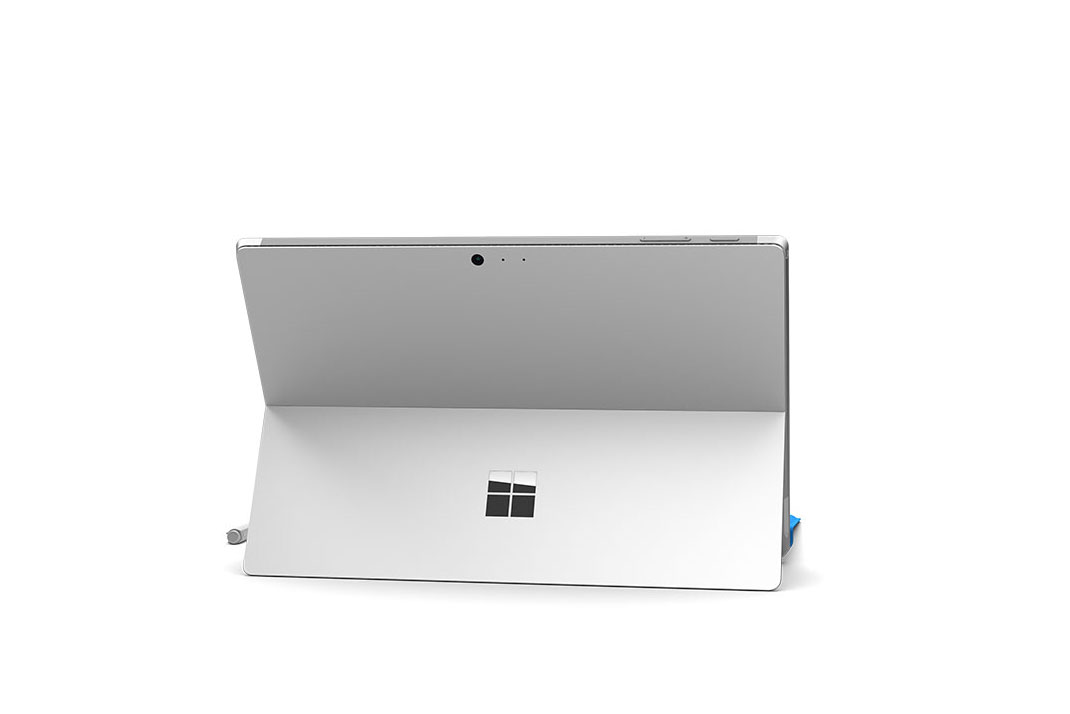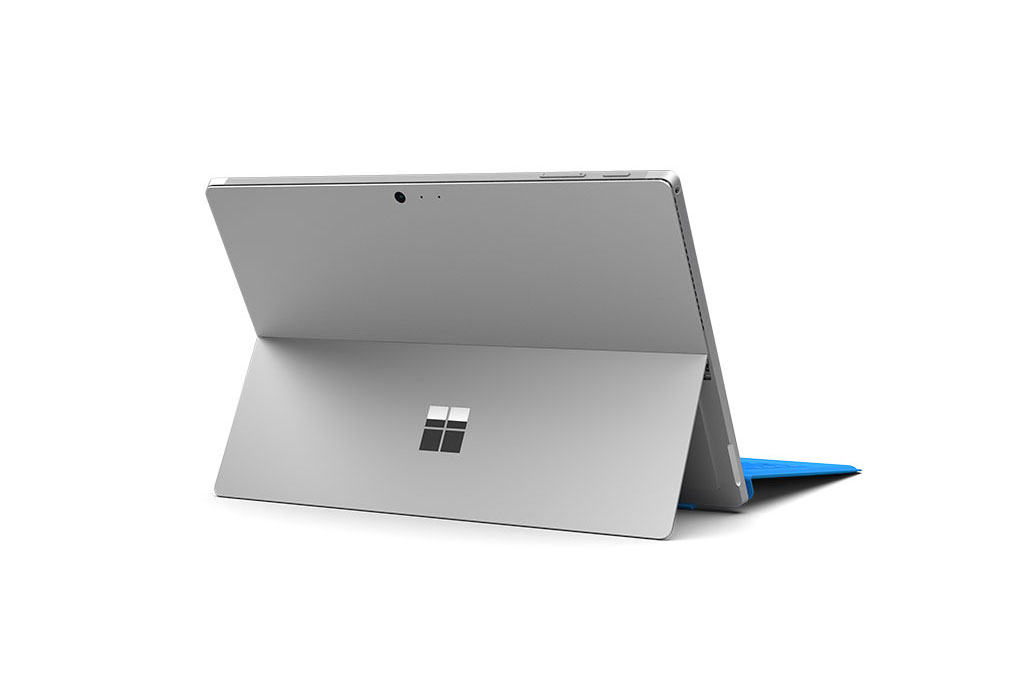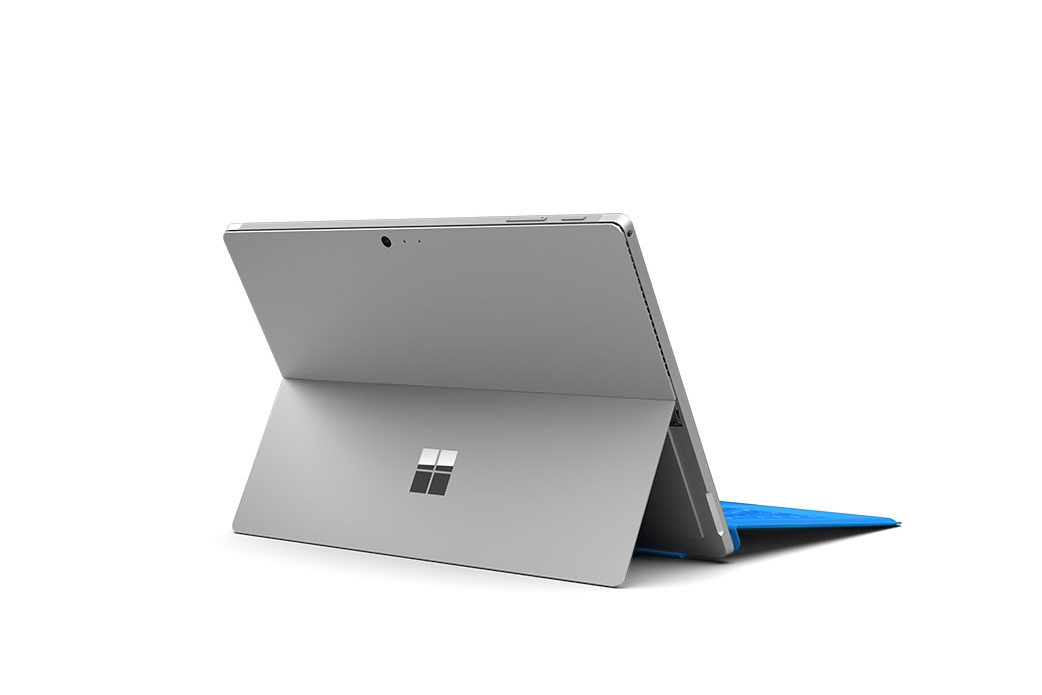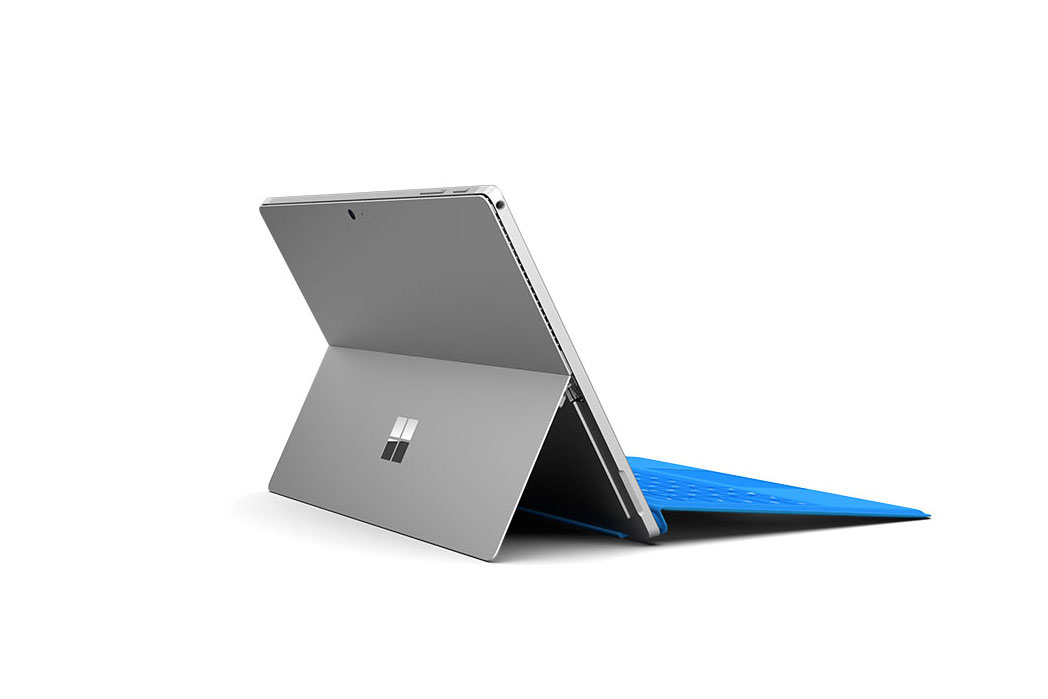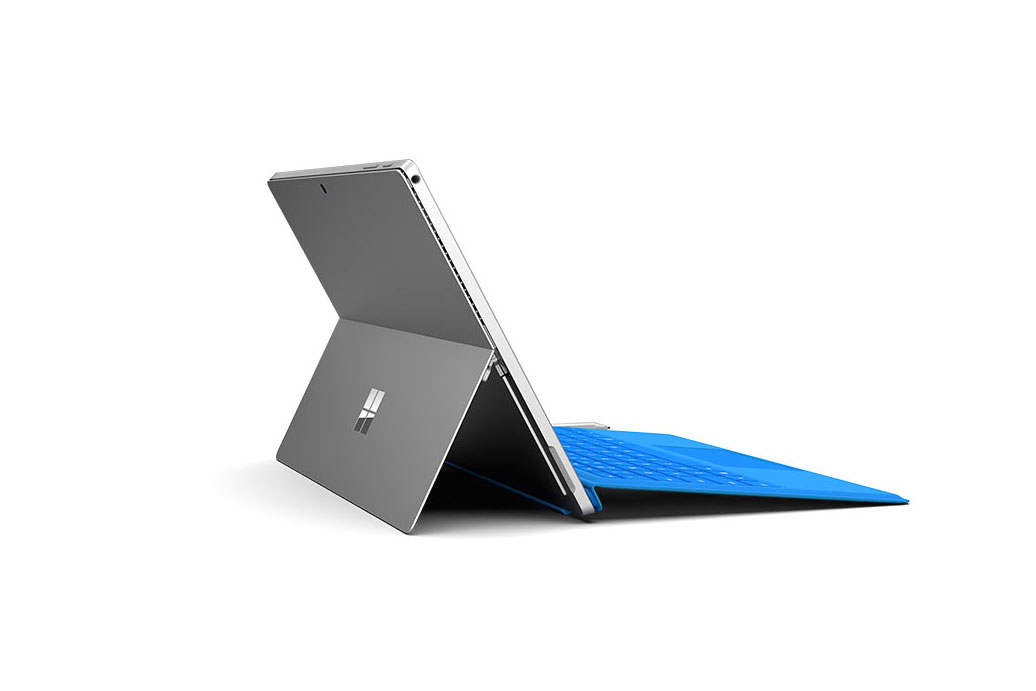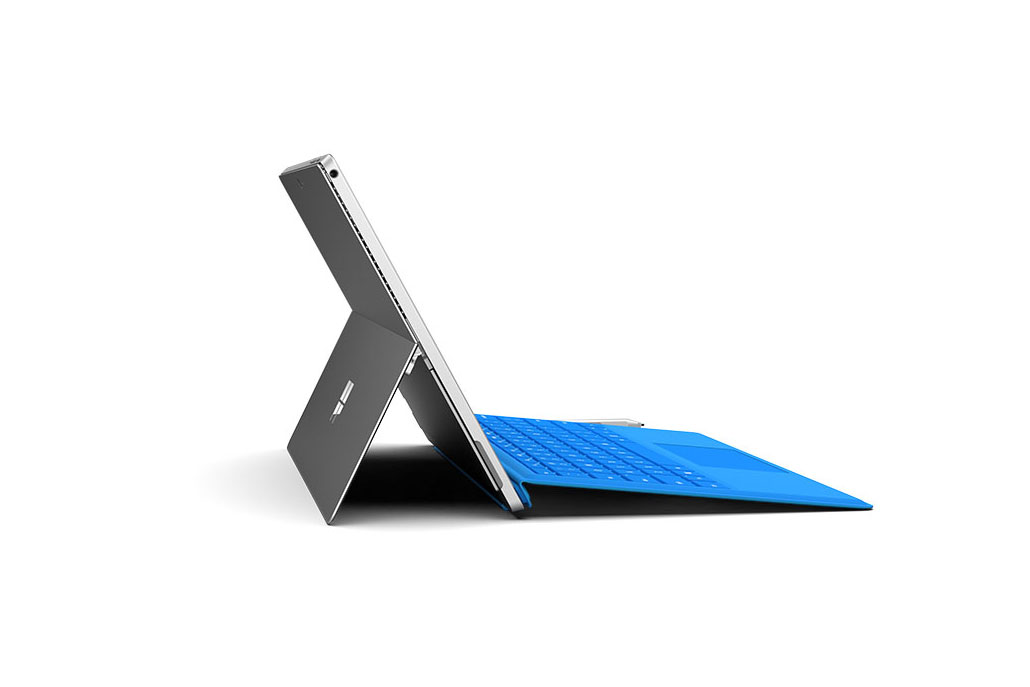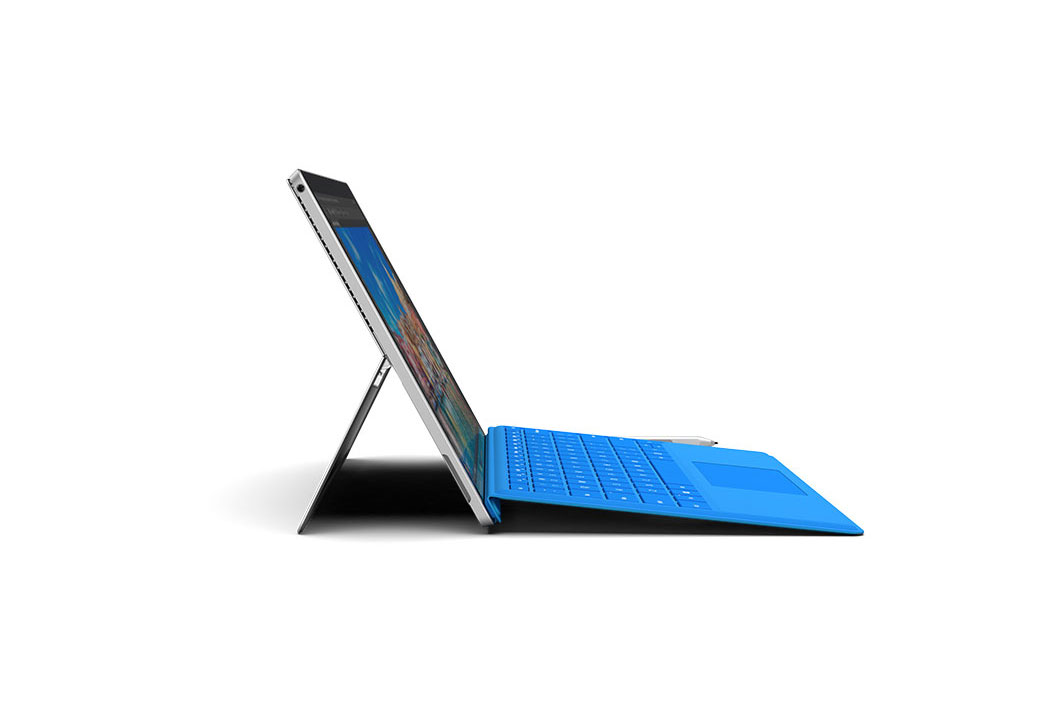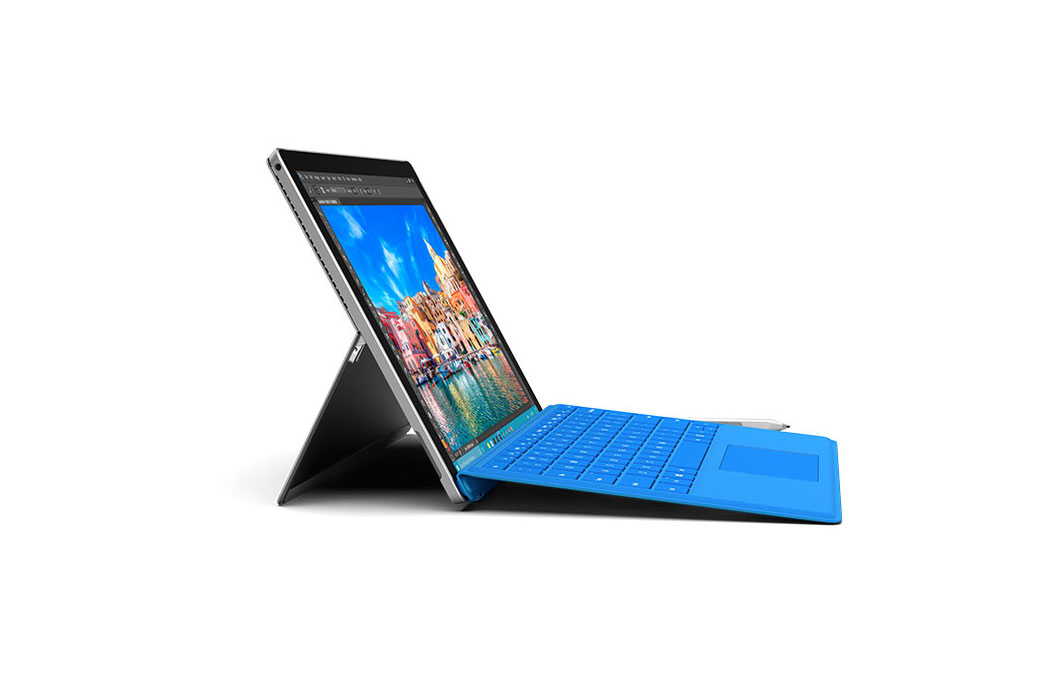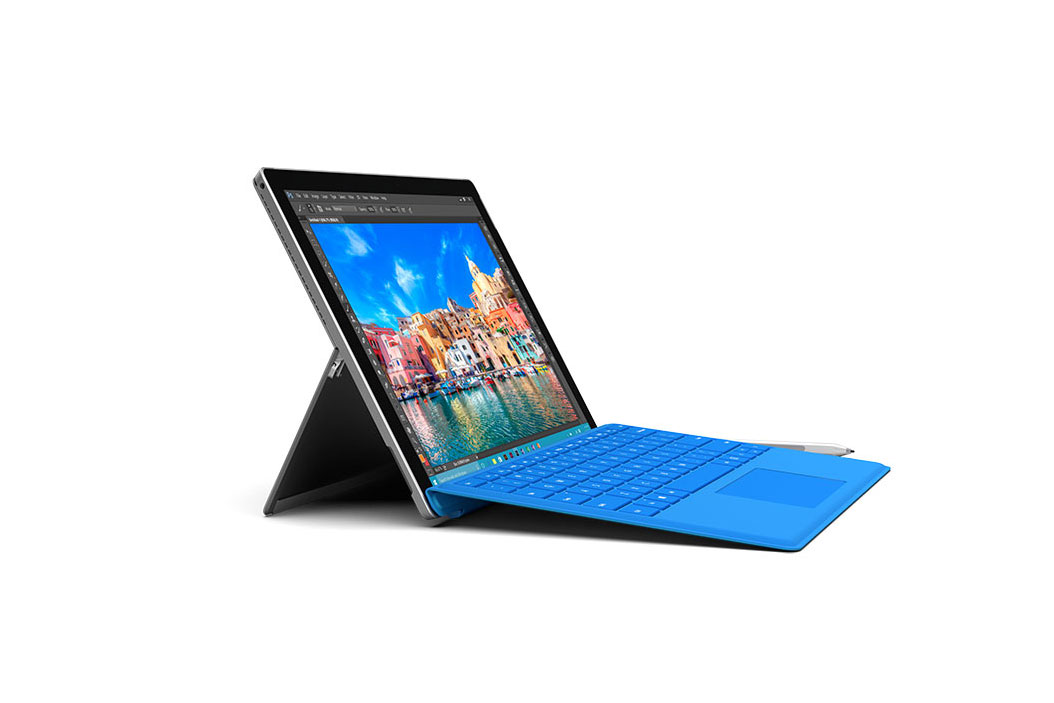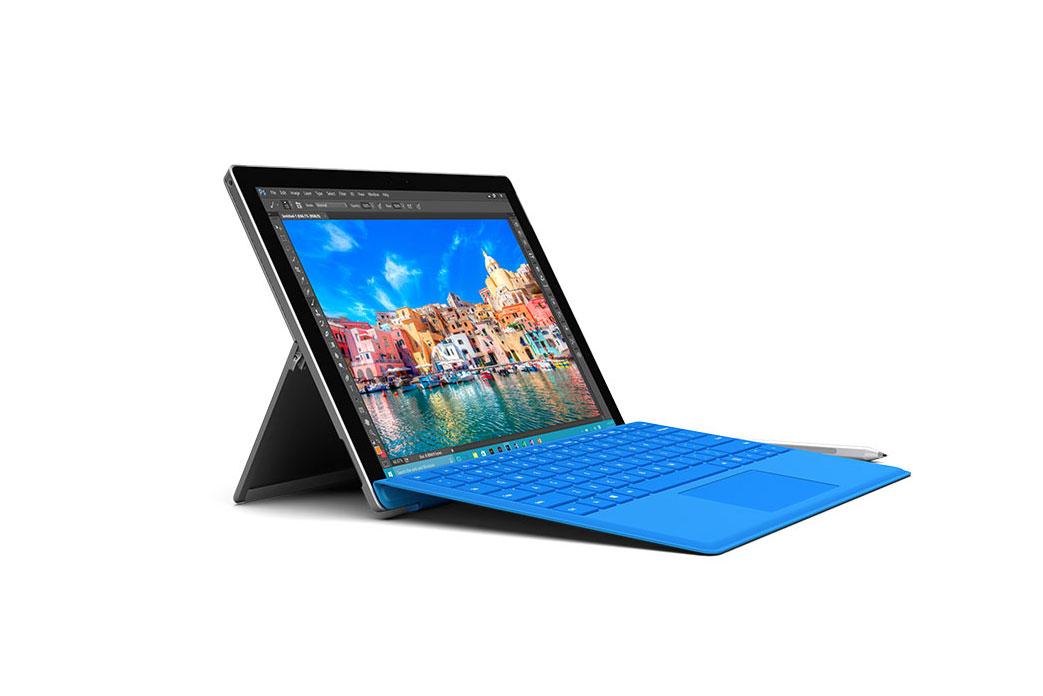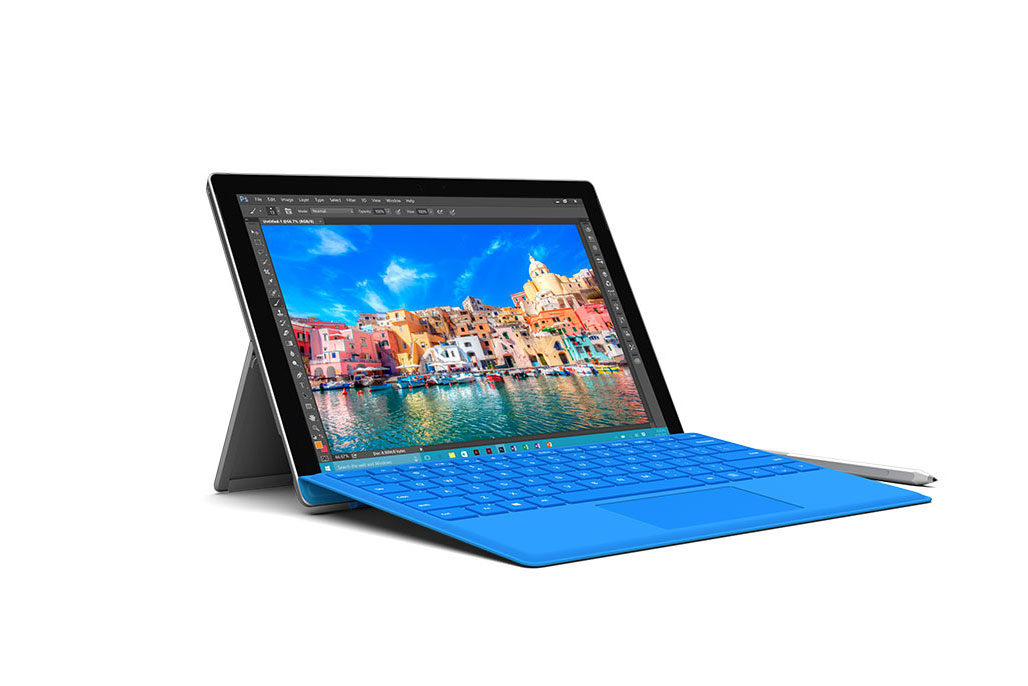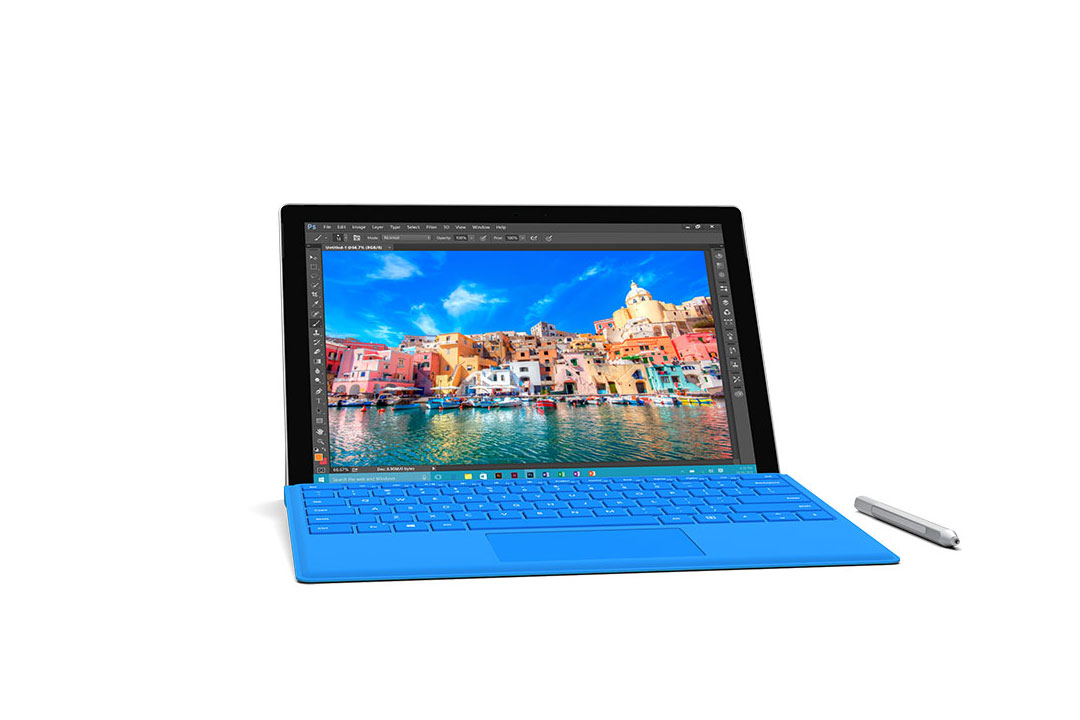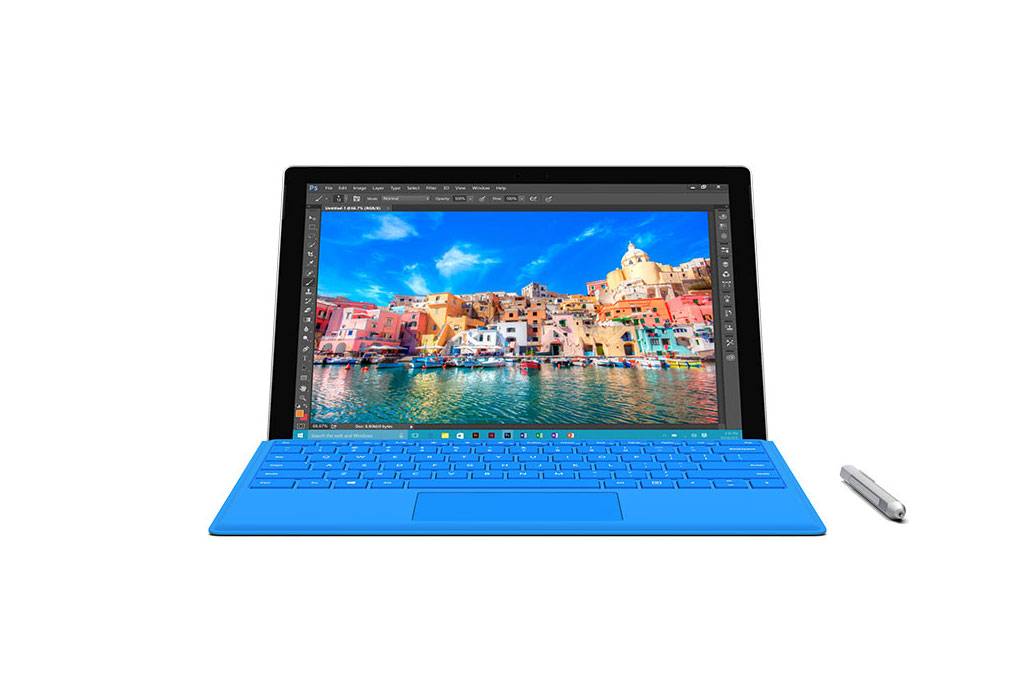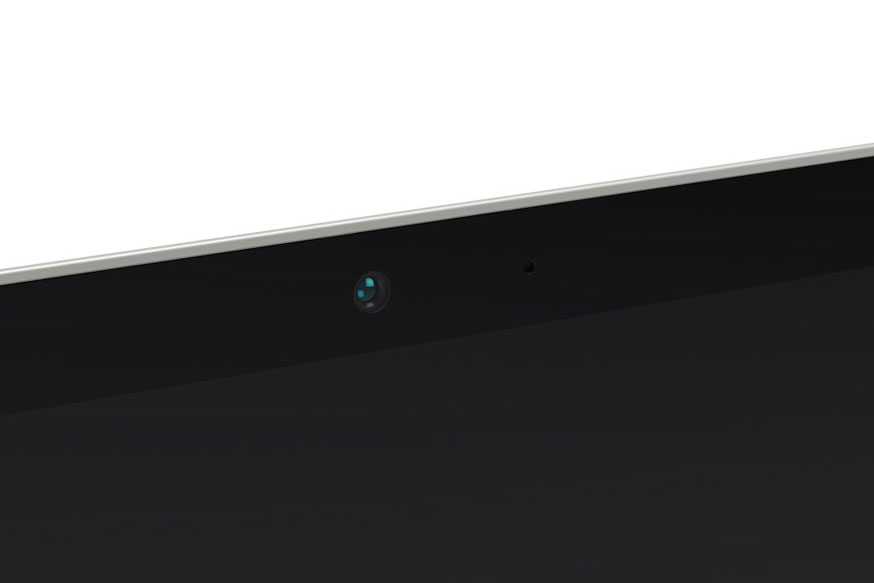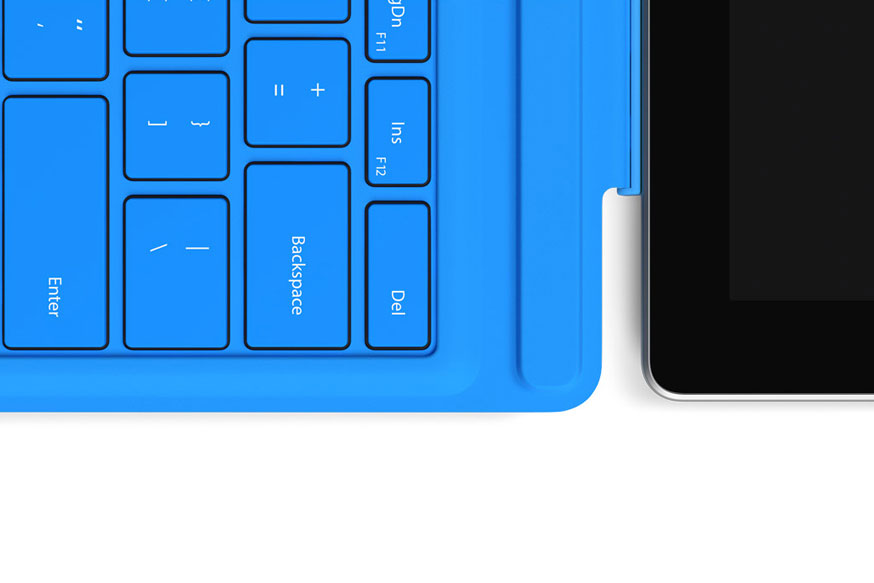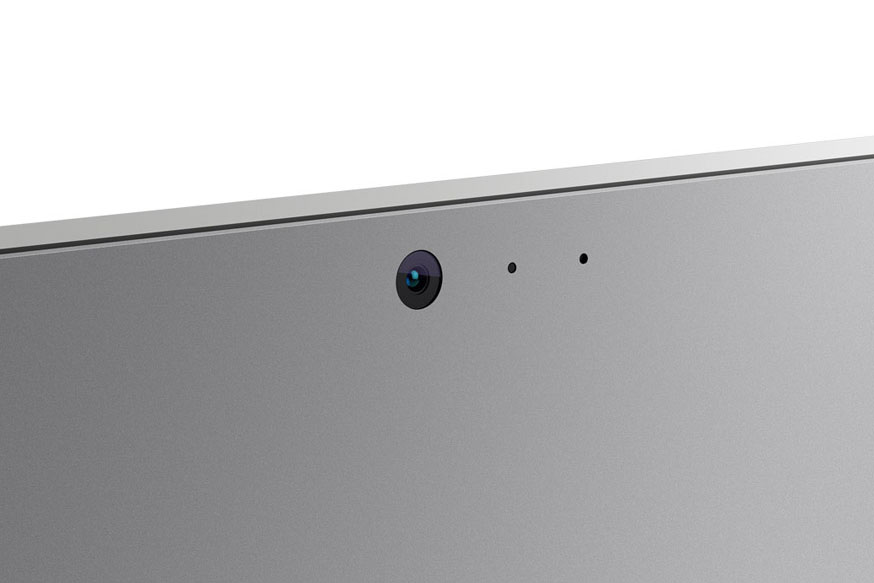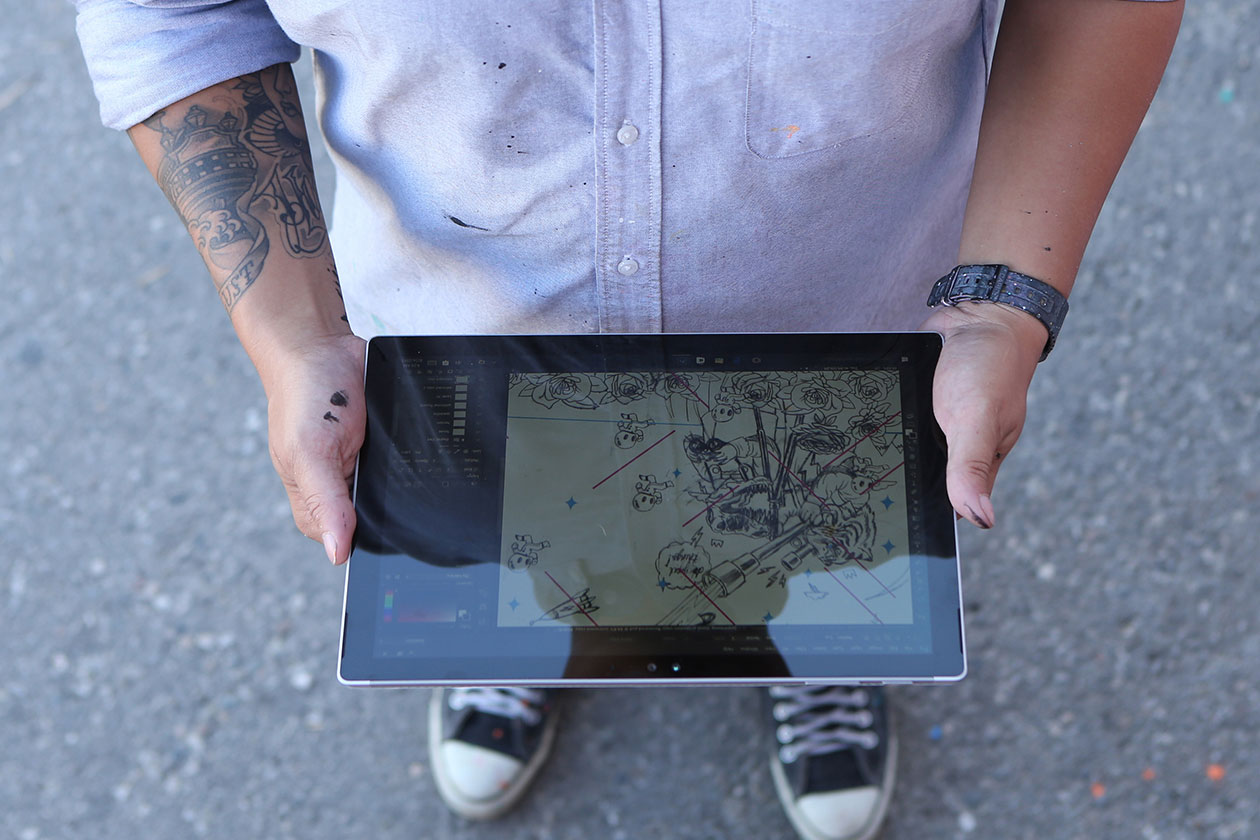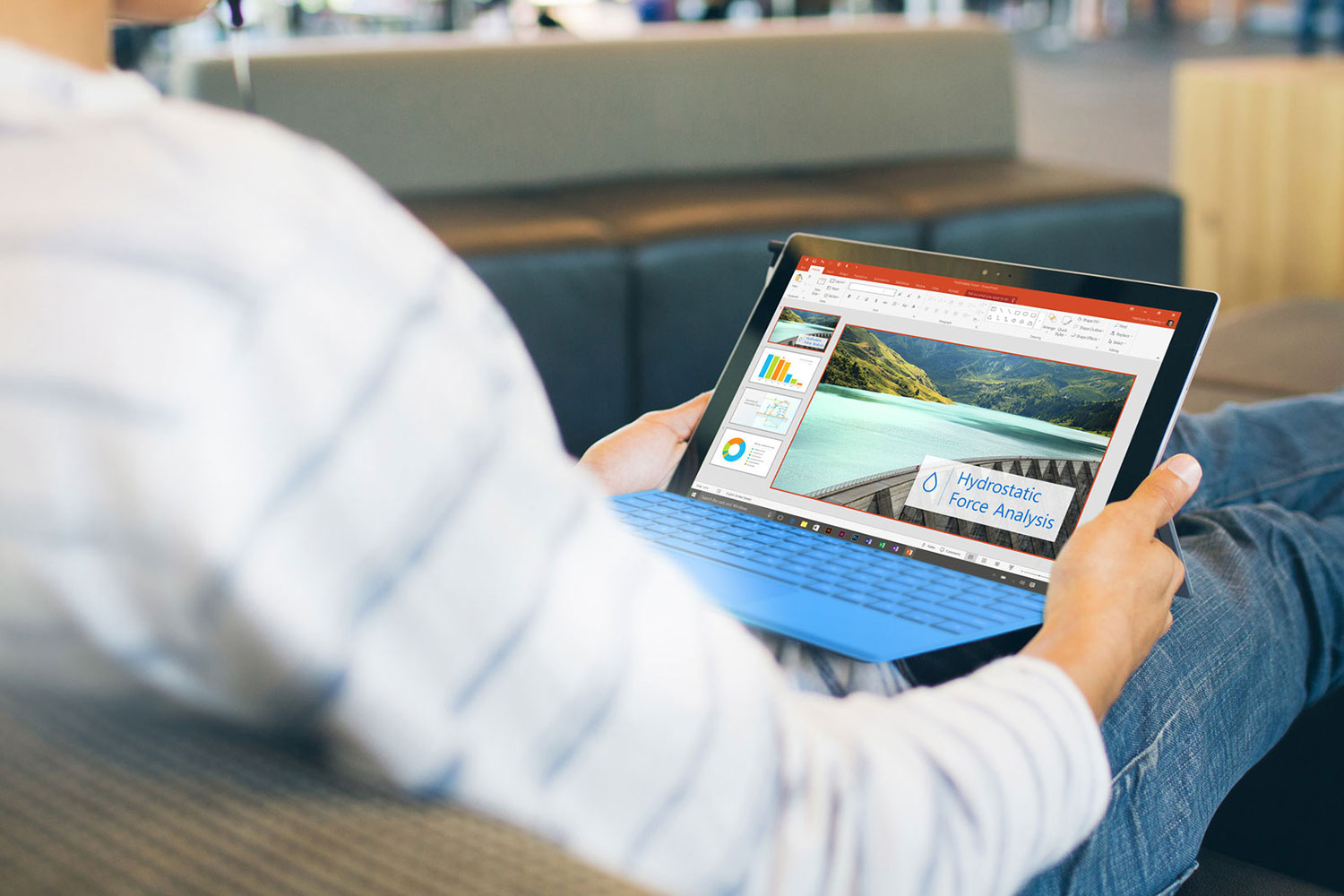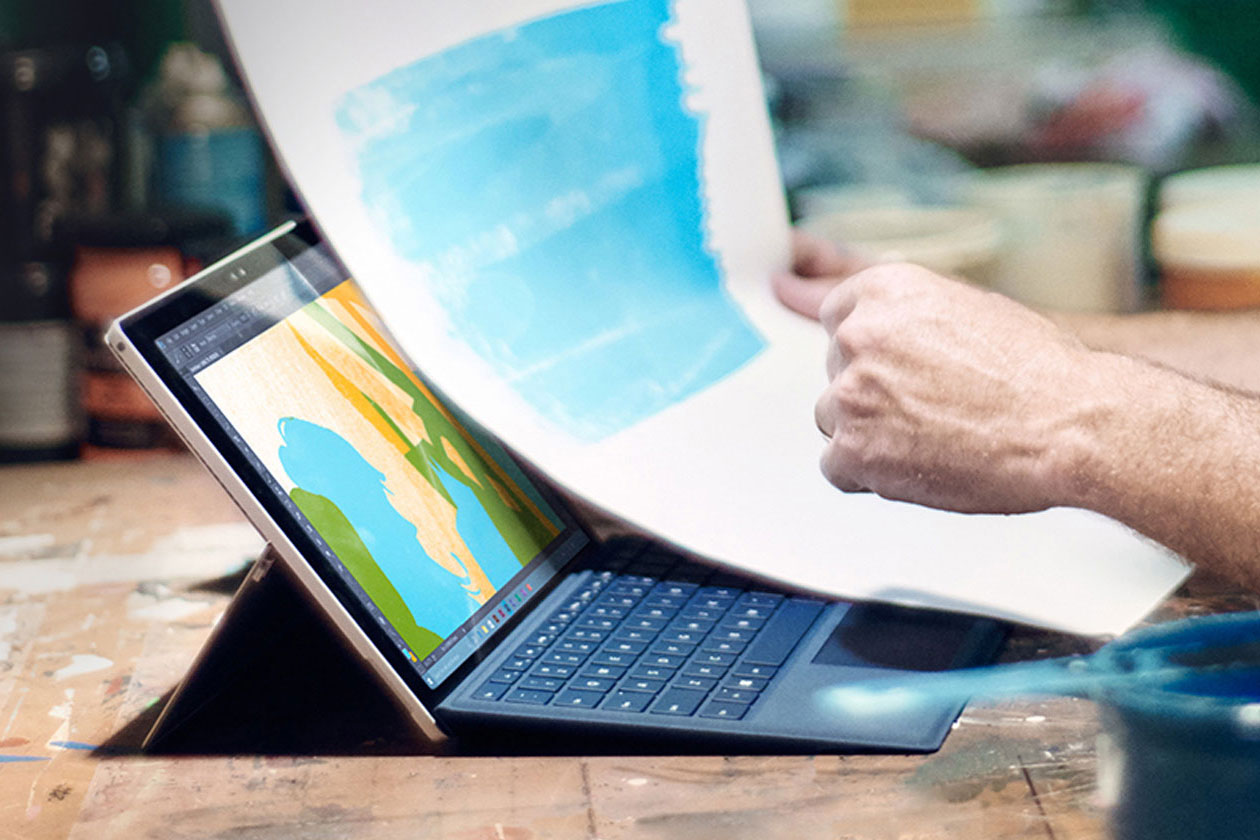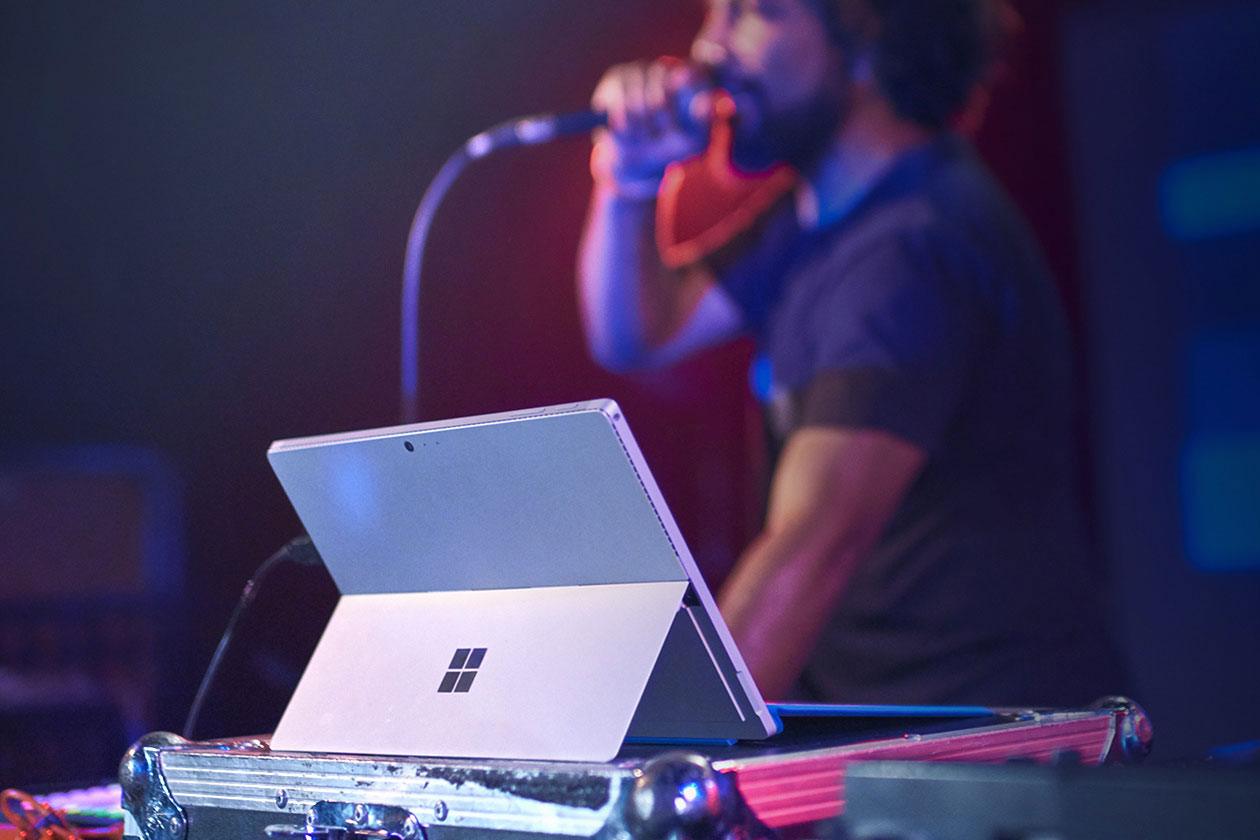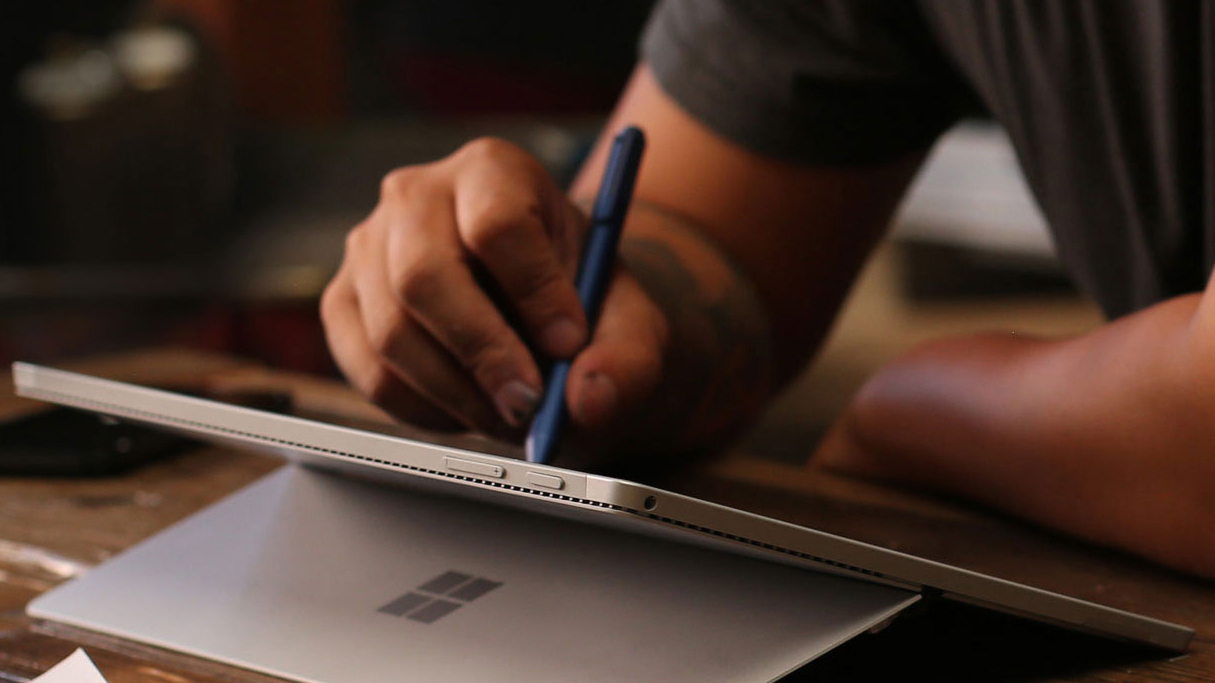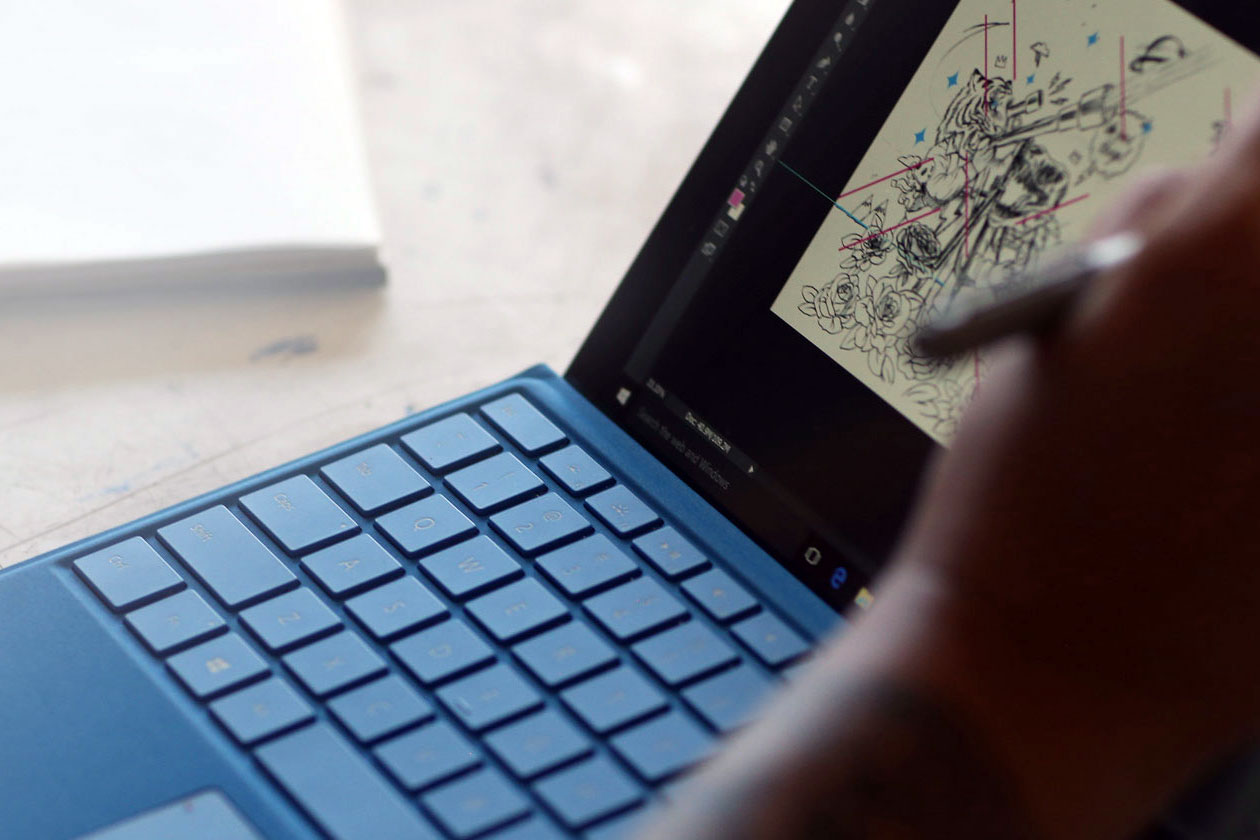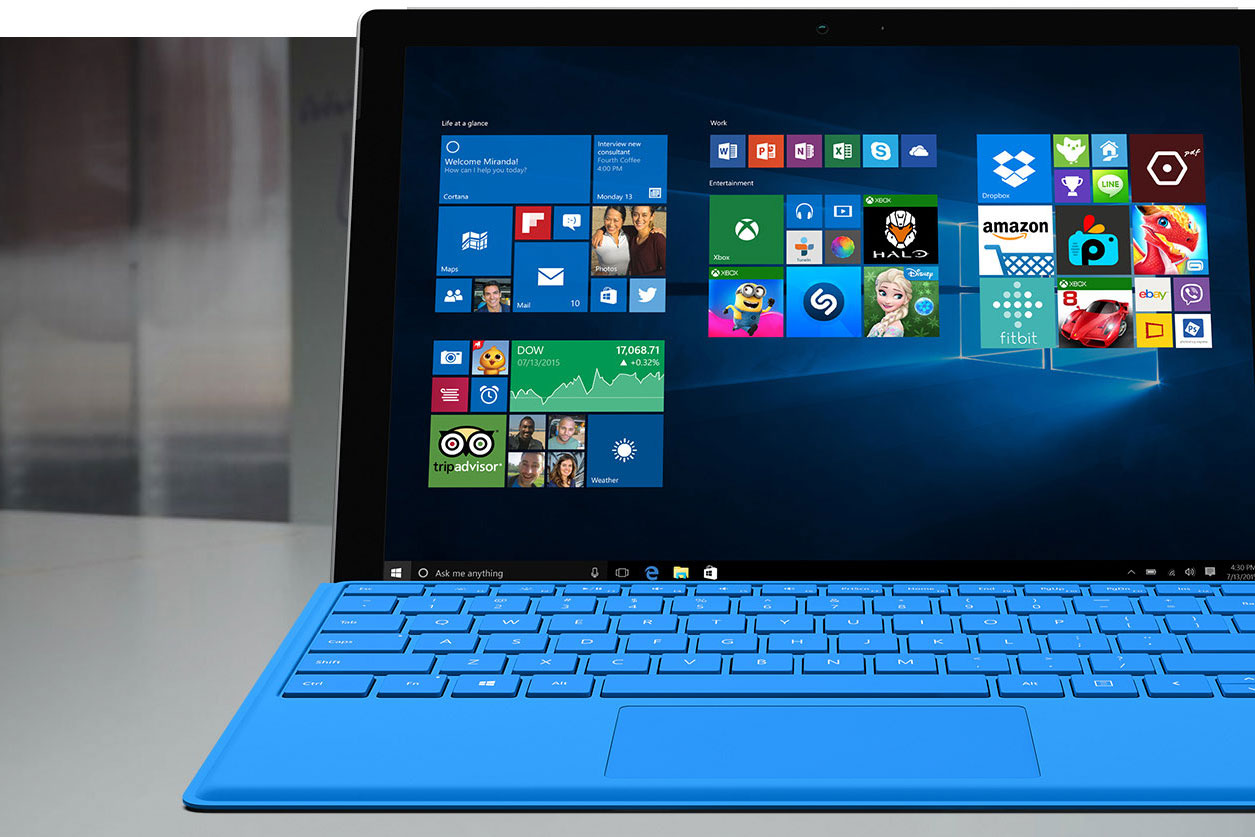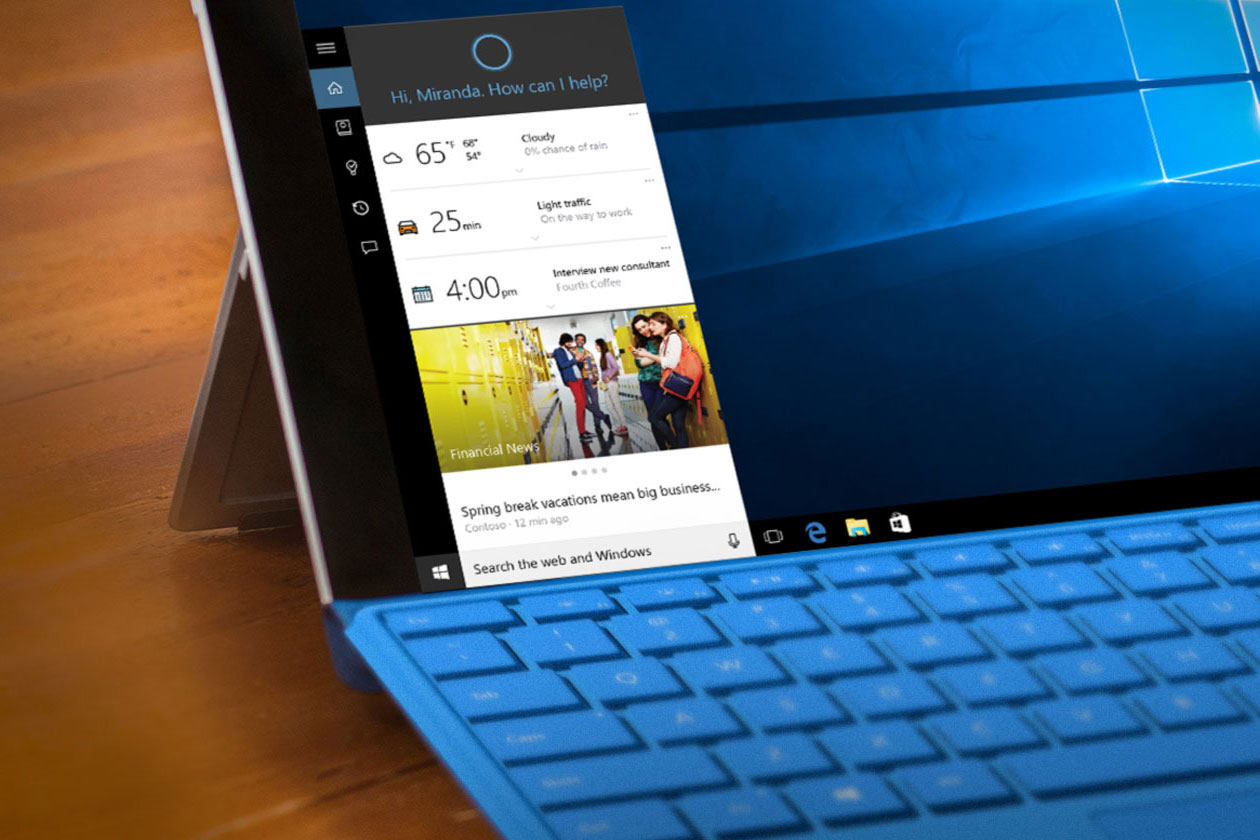As Panos Panay took the stage at Microsoft’s early October press conference, most everyone knew that he had brought the new Surface Pro 4 with him. Still, the latest and greatest from Microsoft managed to pack in some features that no on expected, while slimming down in the process.
The Surface 4 boasts an improved display, packing a 2,763 x 1824 at 267 ppi into a 12.3-inch screen, but leaves the footprint of the Surface Pro 3 untouched. It’s slimmed down, however, from 9.1 mm to a very trim 8.4, which Microsoft suggested is to accommodate the USB 3.0 connection – it would be thinner otherwise. The base model weighs 1.69 pounds, and if you opt for a Core i5 or i7, it weighs just slightly more at 1.73 pounds.
If you use the stylus with the Surface Pro 3, the improved Surface Pen is sure to impress. It now senses 1,024 pressure levels, which lends it a much more tactile feel as you write and draw with it. There’s an eraser too, so you can simply flip the pen to change what you wrote.
Both the pen and touch support are powered by a new system Microsoft calls PixelSense. It’s a sophisticated combination of hardware and software features that allows for an impressively accurate and responsive touch system. Both the Gorilla Glass 4 outer layer and the backlight are thinner than ever, so it feels like you’re really writing on the screen.
There’s a new keyboard cover, which now has an integrated backlight, redesigned scissor switch keys, and a much larger glass touchpad with 5-point multitouch support. The fingerprint sensor allows you to use Windows Hello, and since the width and height are the same as the Surface Pro 3, the new keyboard is compatible with models already out in the wild. Pricing is $130 for the new keyboard, similar to the old one.
The ports have been revamped with an emphasis on simplifying the connectivity of the device. The new setup allow you to hook into a hub that provides four USB 3.0 ports, two 4K-capable DisplayPorts, and Ethernet, all through one connection. The dock is expensive though, at $200.
Under the hood, the Surface Pro 4 boasts the newest in Intel’s Skylake processors. The most basic model offers an Intel Core m3 processor, with customization options all the way up to Core i7. Microsoft claims the Surface Pro 4 is 30 percent faster than the Pro 3, and 50 percent faster than the MacBook Air, but that’s going to be largely dependent on the actual configuration of the system. Other specs have improved too, with up to 16GB of RAM and 1TB of internal storage.
Just because no one was surprised to see the newest in the Surface Pro lineup, doesn’t mean it’s not an exciting release nonetheless. Following a rocky start, Redmond’s very own two-in-ones have been picking up steam, and the Surface Pro 4 is well timed to take advantage of that momentum. Pre-orders start October 7th, with delivery on the 26th of October, with the base m3 model, which includes 4GB of RAM and a 128GB SSD, starting at $899. If you’ve got more to spend, you can configure the Surface Pro 4 to include an Intel Core i7 processor, 16GB of RAM, and a 1TB SSD for a steep $2,699 — though that model isn’t currently available for pre-order.
